This is a list of 23 Famous Civil War Generals from both sides.

Often, the Confederacy gets the nod on great Civil War Generals while the Union takes a backseat until Grant and Sherman came on the stage; however, while compiling this list, I saw many great Generals on the Union side; in fact, there were more on the Union side than on the Confederate side.
Jump to:
- #1. Ulysses S. Grant
- #2. Robert E. Lee
- #3. General Stonewall Jackson
- #4. William Tecumseh Sherman
- #5 General James Longstreet
- #6. Nathan Bedford Forrest
- #7. Patrick Cleburne
- #8. James Birdseye McPherson
- #9. John Reynolds
- #10. George Meade
- #11. Joseph Johnston
- #12. John Bell Hood
- #13. George Thomas
- #14. Winfield Scott
- #15. Winfield Scott Hancock
- #16. Stand Watie
- #17. George McClellan
- #18. J. E. B. Stuart
- #19. George Armstrong Custer
- #20. Ambrose Burnside
- #21. A. P. Hill
- #22. Philip Sheridan
- #23. P. G. T. Beauregard
- #24. George Pickett
What Grant, Sherman, and Sheridan possessed that many of the other Union generals did not was a willingness to attack and use their numbers to advantage. The attacking force always loses more men than the defending force. However, those three understood that if the Union were aggressive, then their superior technology, industry, and manpower would overwhelm them.
Grant knew how to win the war from the Union side, and if he were placed on the Confederate side, he probably would have employed a strategy that Longstreet advocated, which was to be more defensive.
Being strong defensively and wearing the Union down politically was the best strategy for the Confederacy. However, that is easier said than done when logistics come into play.
#1. Ulysses S. Grant
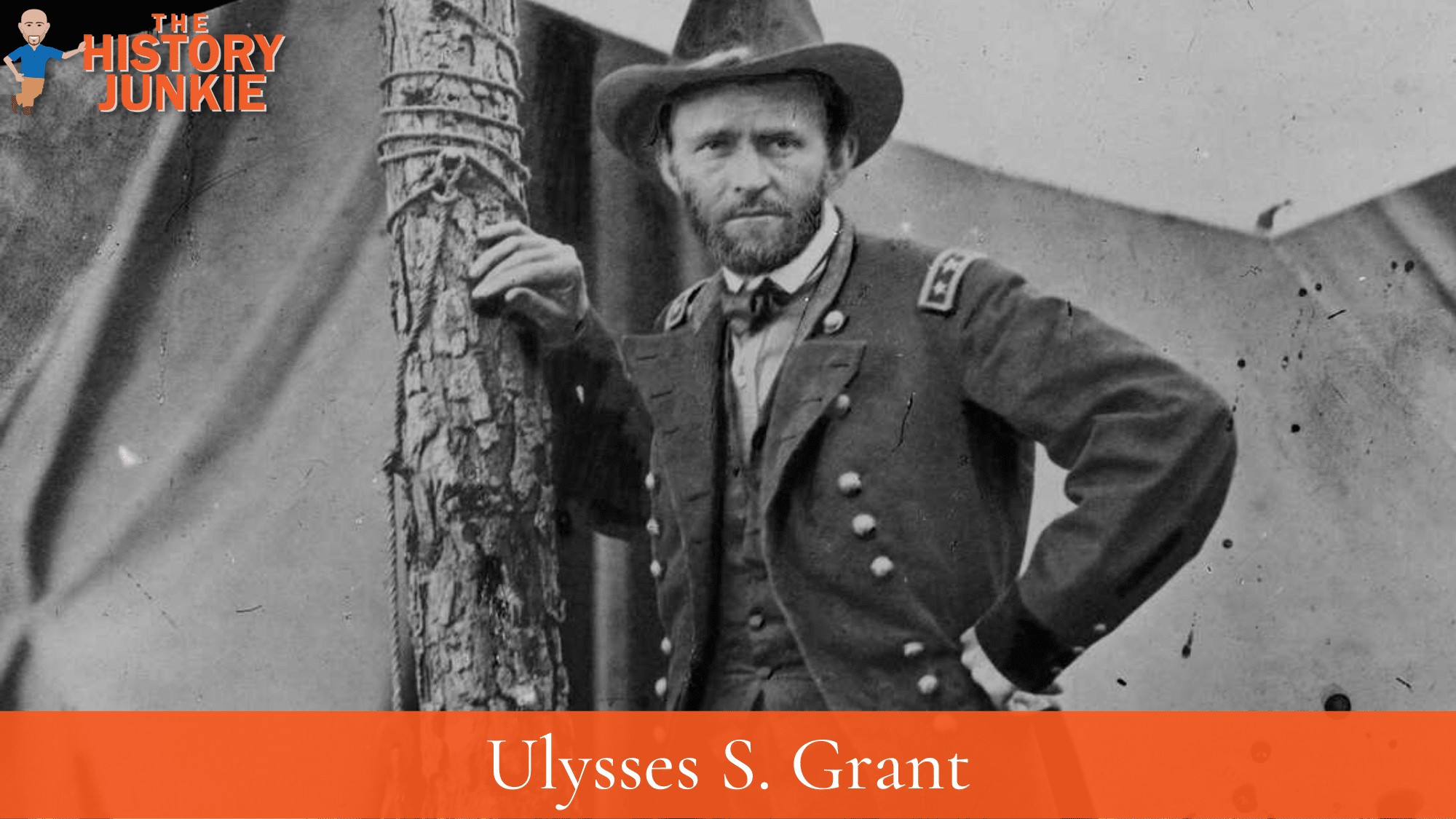
He was calm under fire, seemed to bounce back from failure, and knew how to press his advantages.
At the Battle of Shiloh, the Union took heavy losses and looked to be on the verge of defeat, but Grant stayed calm, and when Sherman spoke to him the evening after the first day, he uttered his famous words, "Lick em tomorrow though," and he did. The next day, reinforcements arrived, and Grant pressed the Confederates again and defeated them.
There is a reason that Ulysses S. Grant defeated Robert E. Lee and not George McClellan. It is because he knew his advantage was in manpower. When he took heavy losses, he filled his lines and kept pushing forward. While McClellan cowered with his larger army, Grant continued to press and force Lee to make another move. He knew to fight a war of attrition.
While aggression could sometimes be his flaw, such as in Cold Harbor, it was this that ended the war. He battered Lee's tired army, and even if Lee was the better tactician, he could not overcome his lack of logistics.
At the end of the war, he was merciful to the rebels who were surrendering. The terms he gave Lee helped heal the nation, and the war itself would lead General Grant to become President Ulysses S. Grant.
Read Article: Ulysses S. Grant Family Tree
Best Moment:
Surrender at Appomattox - Honor is something lacking in this generation, but Grant had it. He could have made terms very cruel for the rebels, but he chose not to and rather begin healing the nation. Robert E. Lee maintained his respect for Grant throughout his life and, even as a professor, never let a student speak ill of his former nemesis.
Worst Moment:
Battle of Cold Harbor - It cost the Union 17,000 lives in a matter of minutes, and attacking the well-fortified positions did not present any advantage. Later in his life, Ulysses S. Grant said this about the battle in his memoirs:
I have always regretted that the last assault at Cold Harbor was ever made. ... No advantage whatever was gained to compensate for the heavy loss we sustained
It bothered him until his death.
#2. Robert E. Lee

There is an eerie feeling in some areas of the South regarding Robert E. Lee. It is almost as if they worship him, and while it seems odd to hold a man in such high regard, it is clear that he should be recognized as one of the great generals in World History.
Those accolades seem rather high, but there is no way that the Confederacy will stay together without his aggressive leadership. That he held off a superior force, defeated so many generals, and frustrated President Lincoln for four years instead of two is a testament to his ability.
The Union had more men, better communication, more advanced technology, efficient railroads, and few issues with logistics, while the Confederacy battled against every one of those strengths. However, it was the risk-taking of Robert E. Lee that made him great. He seemed to have a unique ability to know what the opposing Union commander would do before they did it, and his calculations were usually correct.
Read Article: Robert E. Lee Family Tree
Best Moment:
Battle of Chancellorsville - This is considered Lee's "perfect battle" because he split his army in the face of a superior army, which was considered a mistake. Again, he defeated a superior force and inflicted heavy casualties on the Union. The win would be costly as his trusted General Stonewall Jackson was killed by friendly fire at night. Lee would compare the loss to losing his right arm.
Worst Mistake:
Battle of Gettysburg - Lee took a huge risk in moving his army into the North to launch an attack. While he knew he could not conquer the North, he hoped that a victory on their soil would cause the North to end the war. His attempt would be a disaster. He attacked a defensive force with fewer numbers, and he paid for it. If not for General Meade's caution, the Confederacy could have been defeated with the capture of Lee's Army. Gettysburg would draw criticism from many of his generals.
#3. General Stonewall Jackson
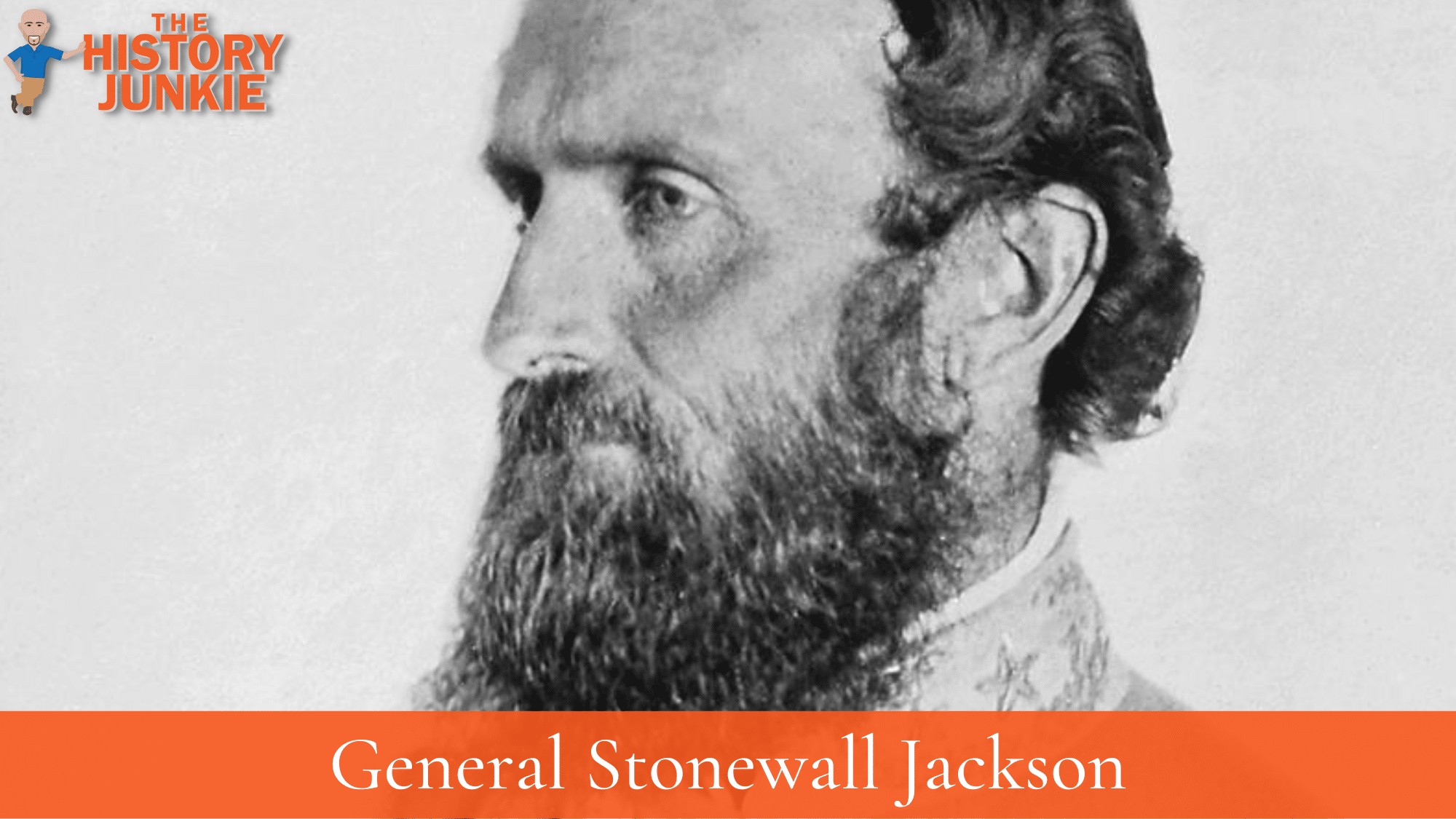
General Stonewall Jackson earned his nickname at the beginning of the war when he stood like a stonewall against the Union troops.
Outside of Lee, he is the most well-known Confederate General, and he played a significant role in almost every engagement in the Eastern Theatre before his death. He was known as a gifted tactician and an effective communicator during battle.
Stonewall Jackson was deeply religious and an observer of the Sabbath, which is ironic since many of his battles were fought on a Sunday. He was as wild as he was religious, with many of those who knew him saying that his eyes would light up during battle, which earned him another nickname, "Old Blue Eyes."
His effectiveness was due to his discipline and tactical sense. Lee had full trust in his discretion, and many argued that if he had not died, Lee would have won at Gettysburg.
His career ended when he was shot by friendly fire and lost his arm. After the amputation, he caught pneumonia and died. His final words would be the following:
Let us cross over the river, and rest under the shade of the trees
Read Article: Stonewall Jackson Family Tree
Best Moments:
Valley Campaign - The Campaign began with a loss at Kernstown, but the loss would be a strategic victory because his aggressiveness would cause the Union to believe there was a bigger force and leave more in reserve than needed to be. During this campaign, he used his opponent's poorly coordinated men and timid leadership against them by being aggressive and showing a shrewd use of terrain.
Worst Moment:
Battle of Chancellorsville - It was Lee's greatest victory, and Jackson played a key role in it. However, when he traveled home that night and took a bullet from friendly fire, it would cost him his life and possibly the Confederates the war. Ironically, Lee's greatest triumph resulted in losing his greatest commander.
#4. William Tecumseh Sherman

William Tecumseh Sherman was General Grant's best General and would eventually command Grant's Army in the Western Theatre after Grant was promoted to the East to fight Lee.
Despite how he ended the war, he did not find success in the war until much later. Early in the war, he struggled at Bull Run, and despite being placed in command of a Union Army in Kentucky, he was eventually relieved of his command and sent back to his home in Lancaster, Ohio.
It was believed he was insane, and Sherman even admitted to suffering from mental illness. He would eventually recover and return to duty. He would begin to work his way back and even help Grant with logistics during his attack on Fort Donelson.
He would get his wish and serve under Grant, and it would be at the Battle of Shiloh that he rebuilt his reputation. He rallied his men into an orderly retreat to avoid a rout from a surprise Confederate attack and helped lead a counter-attack the next day to win the battle.
He and his young protege, General James B. McPherson, helped Grant capture Vicksburg with unorthodox tactics. The process took a while, and some newspapers began to criticize Grant as a drunkard and Sherman as his insane sidekick.
After Grant's promotion, Sherman took over and implemented his famous March to Atlanta. He would take the war to the South and hurt their economy more than it already had. Along the way, he continued to liberate slaves and destroy railroad tracks. He would eventually capture Atlanta and then make his famous March to the Sea, where he captured Savannah.
He would then travel north into the Carolinas, where he captured Columbia and took the surrender of General Joseph E. Johnston.
Read Article: William Tecumseh Sherman Family Tree
Best Moment:
Sherman's March - The greatest moment in General Sherman's career was his march through the South. His march and the inability of the South to stop him destroyed the morale of the people and the Confederate Army. His well-timed victories also aided Abraham Lincoln's victory in the election of 1864. His march is still controversial in modern times, with some calling it brutal and others believing it to be a stroke of genius.
Worst Moment:
Mental Health Breakdown - At the beginning of the war, it seemed as if Sherman would be able to rise through the ranks quickly. However, he struggled with severe mental health issues. It would be through the trust of Grant that Sherman emerged and became the most feared General in the Union Army.
#5 General James Longstreet
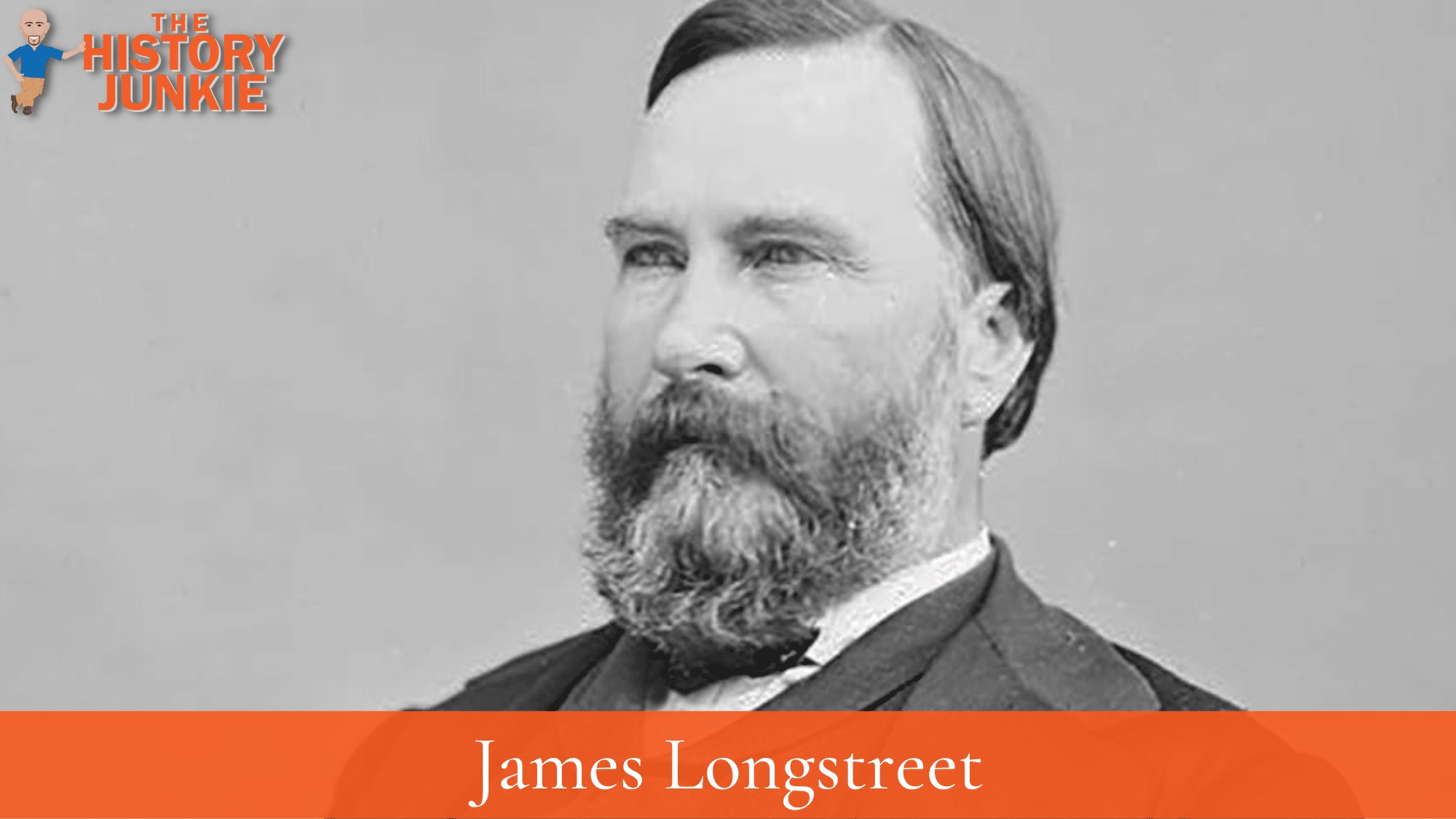
General James Longstreet has had a complicated legacy.
He took part in and was exceptional in every key battle in the Eastern Theatre during the Civil War, but after the war is where he becomes controversial.
He criticized Robert E. Lee and also became a Republican. He served in the United States military under General Ulysses S. Grant. This caused many in the South to loathe him and look at him unfavorably, and his service to the Confederacy would also haunt him in the North. It was not until more recent historians took a look at his work and analyzed it from a more objective perspective. Most believe he was one of the better tacticians on either side of the war.
He earned a reputation as a great defensive general and preferred a more defensive campaign. It was said that Stonewall Jackson was the Hammer of the Confederate Army while James Longstreet was the Anvil, which confirms his reputation.
He fought well throughout multiple campaigns. He proved himself early in the war with his well-trained troops at the First Battle of Bull Run and the Second Battle of Bull Run. Later, he was given more accolades for his defensive stands at the Battle of Antietam and Fredericksburg.
He also became known for his reluctant role in the Battle of Gettysburg when he oversaw Pickett's Charge on Day 3 of the battle.
In the Western theatre, he did well in the Confederate victory of Chickamauga and was severely wounded in the Battle of the Wilderness. His wounds would not heal enough for his return until the Confederate Army was dug in and trying to fend off Ulysses S. Grant.
Read Article: James Longstreet Family Tree
Best Moment:
Second Battle of Bull Run - There are many fine moments for Longstreet, but the most notable that threw him into the conversation for more responsibility occurred at the beginning of the war when he launched a crushing flank attack against the Union to help secure the victory for the Confederates. It would be this action and a series of others that would impress Robert E. Lee and gain the reputation as his "Old War Horse."
Worst Moment:
Battle of the Wilderness - After finding an unknown path around the Union army and putting them into a devastating crossfire, Longstreet was shot by friendly fire and nearly died. He would be out of commission for a while and would not rejoin the army until their defense of Petersburg.
#6. Nathan Bedford Forrest

Historian Shelby Foote said that the Civil War saw two geniuses in action. The first was Abraham Lincoln, and the second was Nathan Bedford Forrest.
He was known as the best cavalry commander of the Confederate Army and had many victories, but he began as an uneducated farm boy who enlisted as a private and worked his way up through sheer ability.
While those seem like humble beginnings, it is not exactly as it seems. Forrest was uneducated at one point in his life, but by the time of the Civil War, he was one of the wealthiest men due to trading many goods and slaves.
He was known for his quick strikes, bravery, and horsemanship. His quick attacks disrupted the Union Army, and his quick movements made it tough to track him. He had around 20 horses shot out from under him, and despite that, he continued to be effective in the thick of battles.
His actions during the Vicksburg Campaign frustrated Grant to the point he had to pause his movement in order to deal with Forrest. During the Battle of Fort Donelson, he managed to break through Grant's siege with 4,000 men and save much-needed supplies for the Confederacy.
He saw action in the Battle of Shiloh, Murfreesboro, Fallen Timbers, and Chickamauga, and in each action, proved to be a deadly force to be reckoned with.
He gained a reputation as a brutal man who killed men without honor. He gained this reputation after the Battle of Fort Pillow, where Black and White troops were slaughtered despite trying to surrender. His actions drew intense criticism in Northern papers, while the South believed him to be a hero.
He finally met defeat during the Battle of Selma, and after Lee's surrender to Grant in Appomattox, he also surrendered. In his farewell speech, he asked that his men submit and bring healing to the Union.
After the war, he would be a leading member of the Ku Klux Klan. Later, he would disavow the group and order them to burn their uniforms, which most did not listen to. His work in the KKK now overshadows his military brilliance.
Read Article: Nathan Bedford Forrest Family Tree
Best Moment:
Vicksburg Campaign - Forrest had developed a great cavalry with experienced men who were battle-hardened. Then, his men were reassigned to General Bragg, and he was forced to recruit others. He managed to take inexperienced men (he did so under protest) into enemy territory, harass their supply lines, and led many successful attacks against the Union. When he arrived back at General Bragg, he had more men than he began with, and they were all armed with Union weapons.
Worst Moment
Fort Pillow Massacre - In one of the more disgusting acts of the Civil War, the men under Forrest's command massacred many in the Union Army at Fort Pillow despite their intentions to surrender. The army was made up of white and black soldiers, but the blacks were targeted much more than the whites. While pouring bullets into the surrendering ex-slaves, the Confederates were chanting racial slurs. It was a terrible sight and was written about in Grant's memoirs and the soldiers that witnessed it.
#7. Patrick Cleburne
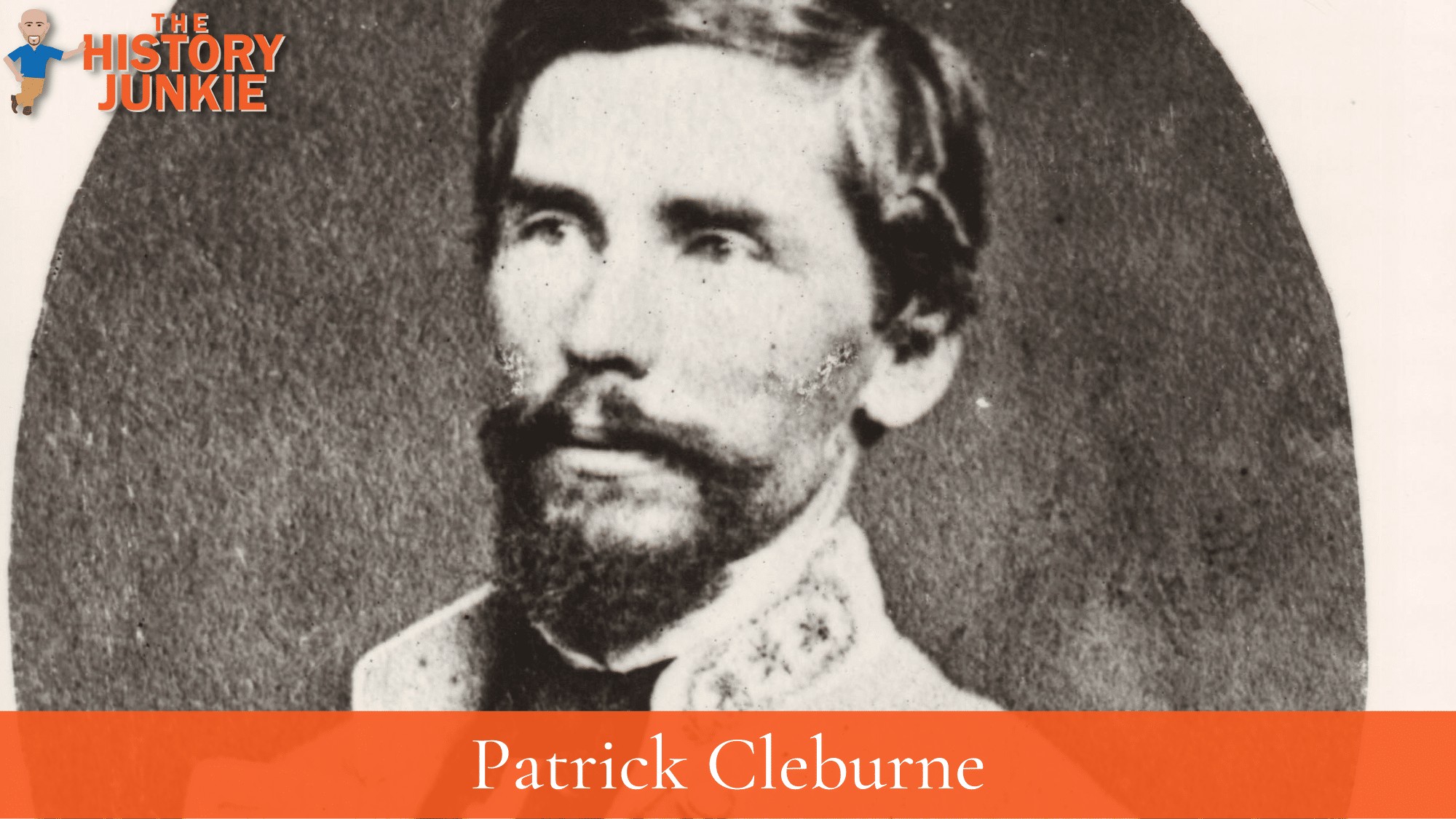
He was known as the "Stonewall of the West" and saw success in the Western Theatre despite the Confederate Army not seeing much success.
His military career began in Ireland prior to his migrating to America. He served in the British Army for three years until he was discharged and then moved to the United States.
Cleburne's strategic use of terrain, his ability to hold ground where others failed, and his talent in foiling the movements of the enemy earned him fame and gained him the nickname "Stonewall of the West."
Federal troops were quoted as dreading to see the blue flag of Cleburne's Division across the battlefield. General Robert E. Lee referred to him as "a meteor shining from a clouded sky."
In 1864, Patrick Cleburne knew that the Confederacy was in trouble and was losing the war. They could not match the North's manpower and men. Generals such as Grant knew how to use their numbers to their advantage. In order to bolster their numbers, Cleburne proposed that the South emancipate their slaves but not give them equal rights.
His plan failed and allowed his rivals to accuse him of being a union sympathizer.
Prior to the campaigning season of 1864, Cleburne became engaged to Susan Tarleton of Mobile, Alabama. Their marriage was never to be, as Cleburne was killed during an ill-conceived assault (which he opposed) on Union fortifications at the Battle of Franklin, just south of Nashville, Tennessee, on November 30, 1864.
Read Article: Patrick Cleburne Family Tree
Best Moment:
Battle of Ringgold Gap - The Confederates were beaten and in retreat after taking heavy losses at the Battle of Missionary Ridge. Union General Joseph Hooker was in pursuit of the army, but his 15,000 men met stiff resistance from General Cleburne. Cleburne only had 4,000 men, but he was able to hold off an army almost four times his size for a safe retreat.
Worst Moment:
Battle of Franklin - Despite his leadership advising him not to attempt a frontal assault on the Union Army that held a fortified position, John Bell Hood ordered it. Cleburne was quoted telling Hood that he would defeat the Union or fall trying. He would fall along with 14 other commanders in the charge.
#8. James Birdseye McPherson
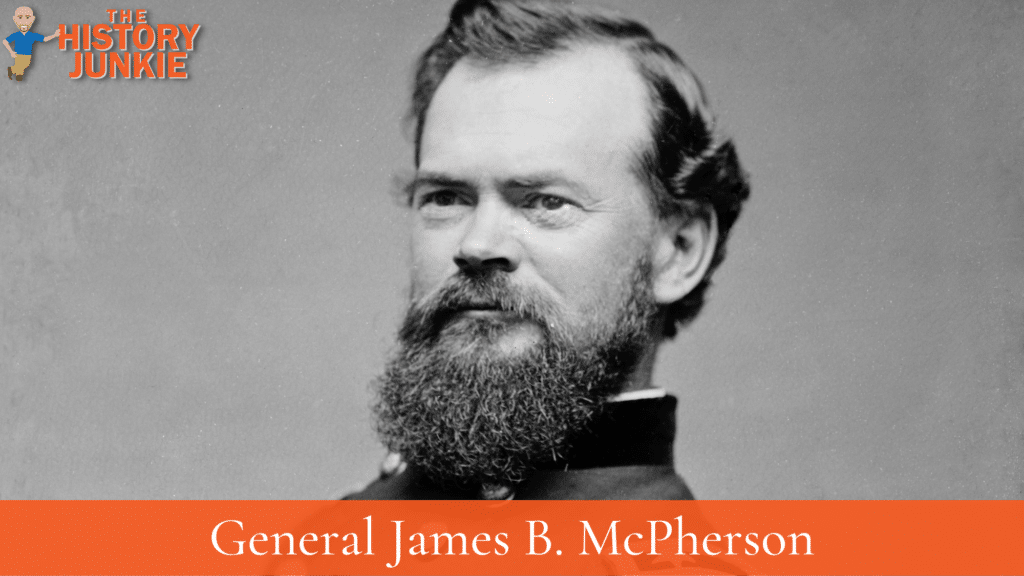
He was possibly the most well-liked General on the Union side. Everyone, including his enemies, respected his intelligence and ability. It was believed had he not died in Atlanta that, he would have become President of the United States.
James McPherson had an engineering background, which came in handy during the multiple sieges that Grant had to implement during the Vicksburg Campaign.
He served with distinction throughout the campaign, and after Grant was sent east to fight Lee, McPherson would serve under General Sherman.
On March 12, 1864, he was given command of the Army of the Tennessee after its former commander, William Sherman, was promoted to command of all armies in the West.
He then requested leave to go home and marry his fiancé Emily Hoffman in Baltimore, Maryland. His leave was initially granted but quickly revoked by Sherman, who explained McPherson was needed for his upcoming Atlanta Campaign.
McPherson's army was the Right Wing of Sherman's army, alongside the Army of the Cumberland and the Army of the Ohio.
Unfortunately, it would be during this campaign that James McPherson would lose his life after being shot. His former classmate and Confederate General John Bell Hood said this about him:
I will record the death of my classmate and boyhood friend, General James B. McPherson, the announcement of which caused me sincere sorrow. Since we had graduated in 1853, and had each been ordered off on duty in different directions, it has not been our fortune to meet. Neither the years nor the difference of sentiment that had led us to range ourselves on opposite sides in the war had lessened my friendship; indeed the attachment formed in early youth was strengthened by my admiration and gratitude for his conduct toward our people in the vicinity of Vicksburg. His considerate and kind treatment of them stood in bright contrast to the course pursued by many Federal officers
When Sherman heard the news, he cried openly for his dear friend. He wrote McPherson's fiance and said:
My Dear Young Lady, A letter from your Mother to General Barry on my Staff reminds me that I owe you heartfelt sympathy and a sacred duty of recording the fame of one of our Country's brightest and most glorious Characters. I yield to none on Earth but yourself the right to excel me in lamentations for our Dead Hero. Why should death's darts reach the young and brilliant instead of older men who could better have been spared?
His fiance never married.
Read Article: James Birdseye McPherson Family Tree
Best Moment:
Vicksburg Campaign -McPherson came into the Union Army as an engineer and would prove himself on the battlefield as well. During the Vicksburg campaign, he displayed how versatile he could be by helping plan the various sieges that occurred and having success against the Confederates in the field. He played a key role in Grant's capture of Vicksburg.
Worst Moment:
Battle of Atlanta - Despite performing well and making the right calls, he ended up in a situation that resulted in his death. McPherson had a fiance whom he requested to go home and marry but was denied, which adds to the tragedy. He also had plenty of recognition and would have probably been a President of the United States due to his likability.
#9. John Reynolds
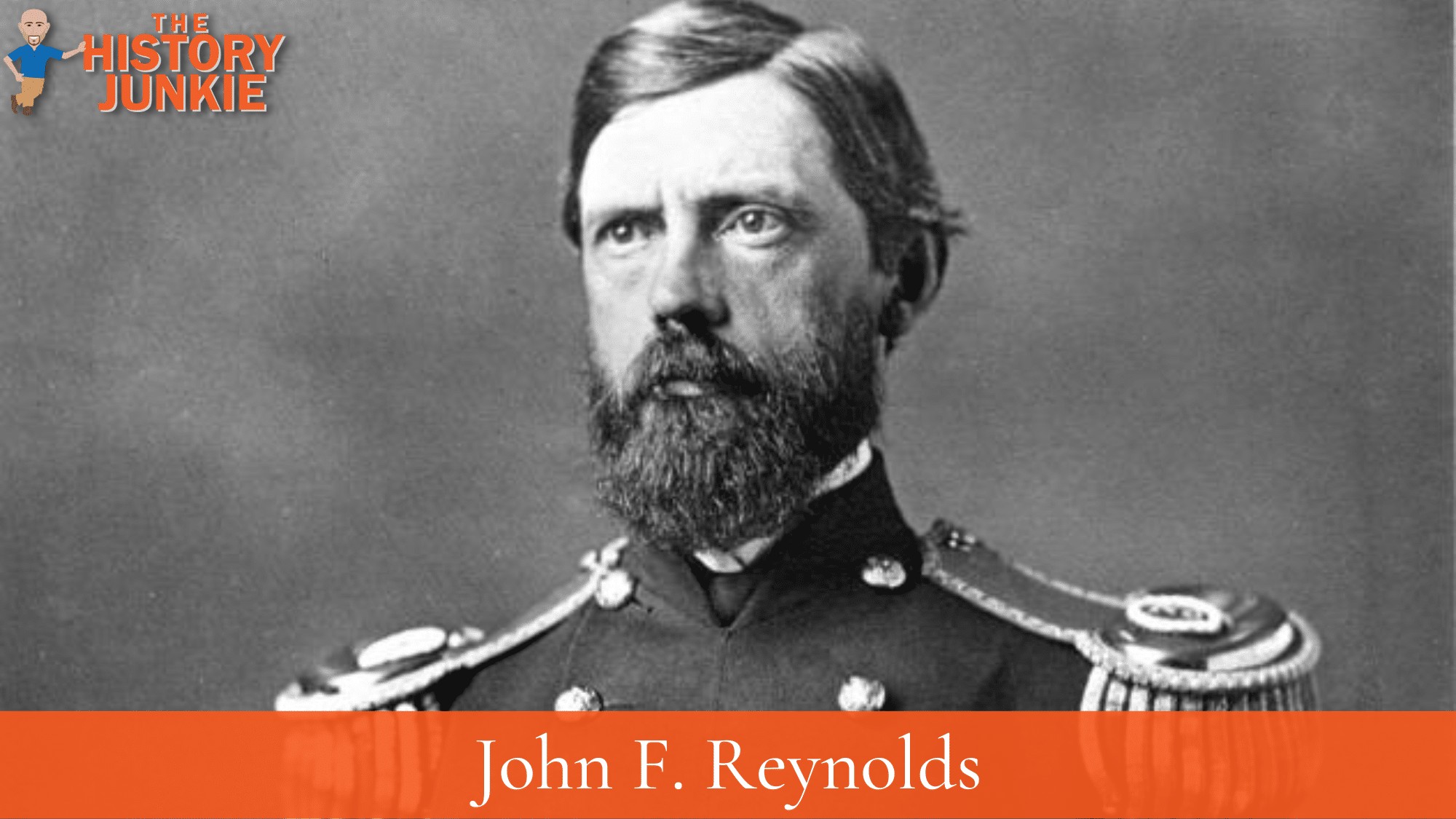
He was considered the best General in the Army at the time of the Battle of Gettysburg and was even offered command of the Army of the Potomac by Abraham Lincoln, but refused to take the command unless he was allowed to be isolated from bureaucrats in Washington who he believed made bad decisions. Lincoln would not agree and instead promoted George Meade.
He fought well in the eastern theatre and, despite failings from senior officers, always seemed to have a good showing. In the Battle of Second Bull Run, his troops halted the charging Confederates and allowed the Union an orderly retreat that saved them from much worse. During Fredericksburg, he received flawed commands and did not support Meade's breakthrough of the Confederate line, and thus the breakthrough failed.
During Chancellorsville, he became frustrated with General Hooker, who seemed afraid to attack the Confederates, and instead opted not to take the advice of his fellow officers who wished to attack.
He was well-respected by his peers and, unfortunately, was shot and killed on the first day of the Battle of Gettysburg.
Read Article: John Reynolds Family Tree and Descendants
Best Moment:
Battle of Beaver Dam Creek - With the Confederates launching an aggressive and well-coordinated attack, Reynolds and his men mounted a stiff defense and pushed them back. The Confederates took heavy casualties due to Reynolds's defense, and it would be one of the only bright spots that occurred during the Seven Days Battles.
Worst Moment:
Battle of Gaines Mill - Shortly after his great defense of Beaver Dam Creek, Reynolds made a mistake due to not sleeping for two days. He was captured in Boatswain's Swamp, Virginia. Thinking he was in a place of relative safety, he fell asleep and was not aware that his retreating troops left him behind. He was extremely embarrassed when brought before the Confederate general of the capturing troops.
#10. George Meade
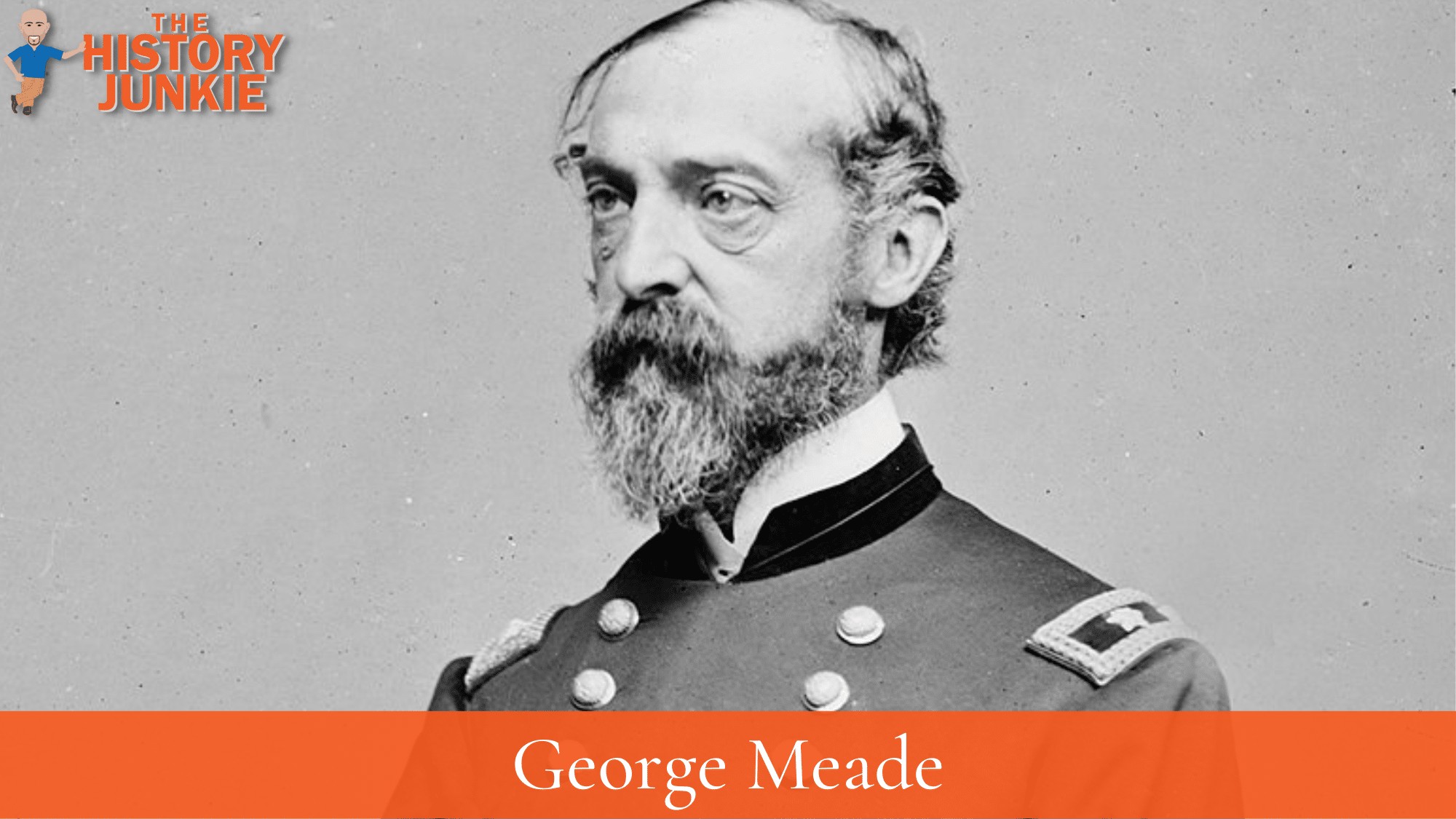
General George Meade is one of the most overlooked Generals of the Civil War. While many remember that he was the Commander-in-chief of Gettysburg when he successfully defeated Robert E. Lee's invasion of the North, he is overshadowed by other commanders such as Ulysses S. Grant and William Sherman.
Meade was an excellent commander, but his actions at Gettysburg hurt his reputation as an aggressive commander.
Meade saw success at the Second Battle of Bull Run, the Battle of Antietam, and the Battle of Fredericksburg.
At the Battle of Fredericksburg, he was the only Union General to break through Lee's line and dealt some huge blows to General Stonewall Jackson. If not for the miscommunication with General Reynolds, the battle may have had different results.
After Grant's promotion, Meade served with him, but Grant controlled the strategy. Grant was known for his unrelenting attacks. Meade served well but did not care for Grant's war of attrition and how many casualties the Union was taking. Despite their disagreements, Grant recommended Meade for promotion.
Read Article: George Meade Family Tree
Best Moment:
Battle of Fredericksburg - The battle was a complete disaster for the Union. They launched brave frontal assaults on well-defended Confederates that led to mass casualties. However, the bright spot was George Meade, who created a gap in Stonewall Jackson's line. There was a miscommunication with General Reynolds, which caused Meade to fall back. However, he showed his ability and aggression at Fredericksburg.
Worst Moment:
Battle of Gettysburg - It is unfortunate that Meade is remembered for his failure to counter-attack Lee at Gettysburg because his defense was flawless. He had only been the commander of the Army of the Potomac for less than a week before Lee's invasion. The Confederates were dominated on Day 2 and Day 3 of the battle. After the failure of Pickett's charge, Lee's army was vulnerable. If Meade had attacked Lee all the way back to Virginia, he might have destroyed Lee's army, thus shortening the war.
#11. Joseph Johnston
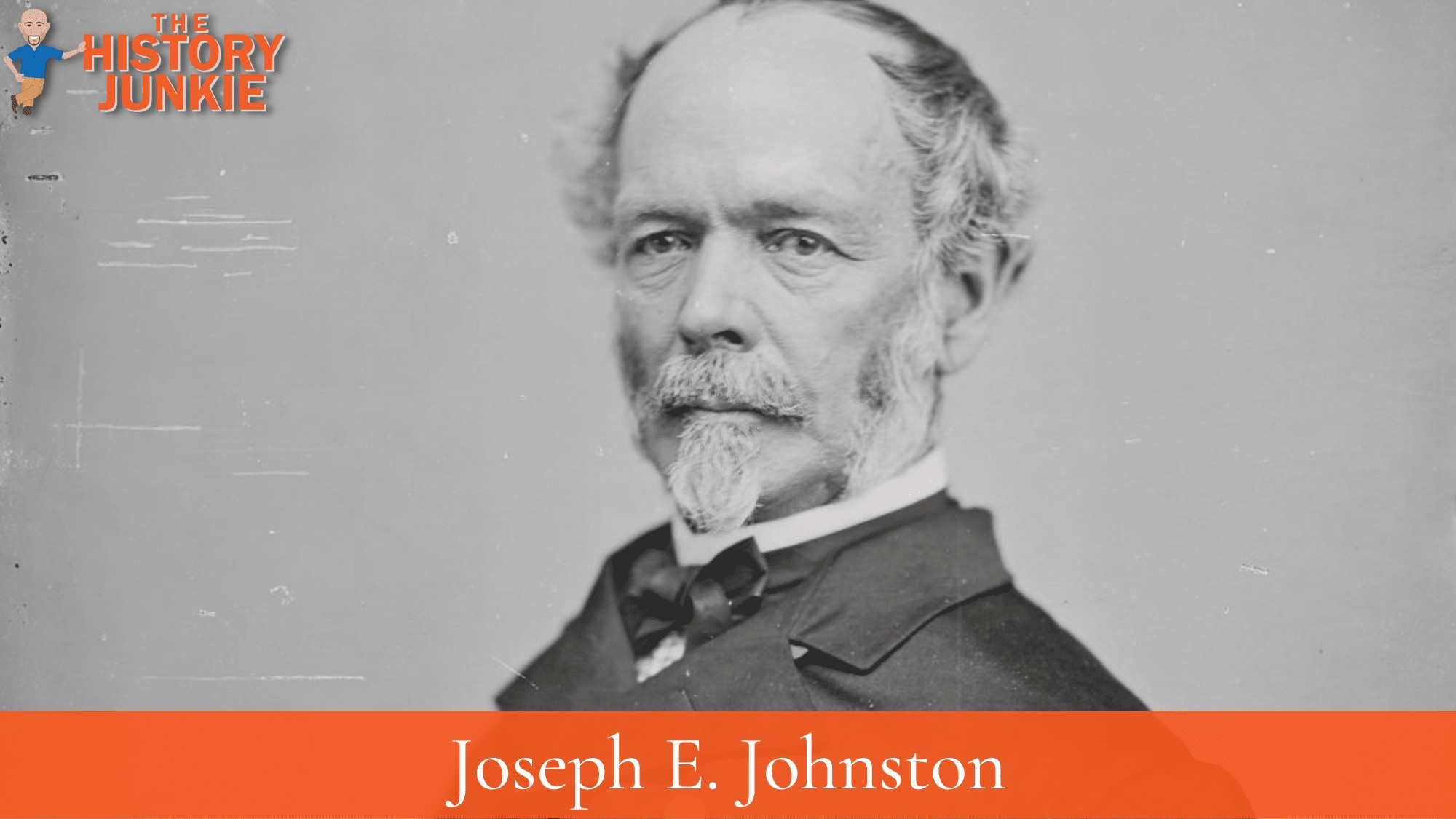
Robert E. Lee gets a lot of praise for how he managed the Confederate Army of Northern Virginia. However, it is Joseph Johnston that was spoken well of in the memoirs of Grant and Sherman.
Johnston was a more defensive fighter who fought textbook and focused on maneuvering his army to avoid heavy casualties. During Sherman's March to Atlanta, he was in constant retreat but inflicted more damage on Sherman's army and slowed his process.
When Jefferson Davis reassigned him and placed the more aggressive John Bell Hood, it played into Sherman's hands, who had superior numbers and wanted to engage and push his advantage. Sherman praised Johnston for his soldiering and said the war would have been prolonged if Johnston would have remained in command.
His biggest flaw was his lack of political finesse. He got into arguments with Jefferson Davis and other prominent politicians within the Confederacy. He did not like to report to Davis, and Davis did not know what he was planning to do in the field. Despite his success on the battlefield, this issue plagued his career.
He surrendered his army to William Sherman, and the two would always have mutual respect for each other. He attended Sherman's funeral and did not cover his head out of respect. The weather was rough, and he would catch pneumonia and passed away shortly after.
Read Article: Joseph Johnston Family Tree
Best Moment:
Atlanta Campaign - Sherman believed Johnston's strategy would have prolonged the war. Jefferson Davis believed he would let Atlanta fall rather than fight for it. Sherman would have eventually overwhelmed Johnston, but his defensive tactics did serve him better than they did in the Peninsula Campaign.
Worst Moment:
Battle of Vicksburg - This was by far the worst moment for Johnston. His lack of aggression allowed Grant to split the Confederate Army in half and focus his efforts on Pemberton's Army. Johnston could not catch up with Grant, and by the time he did, it was too late, and Vicksburg was under siege. Some argue that he should leave the army after this campaign.
#12. John Bell Hood
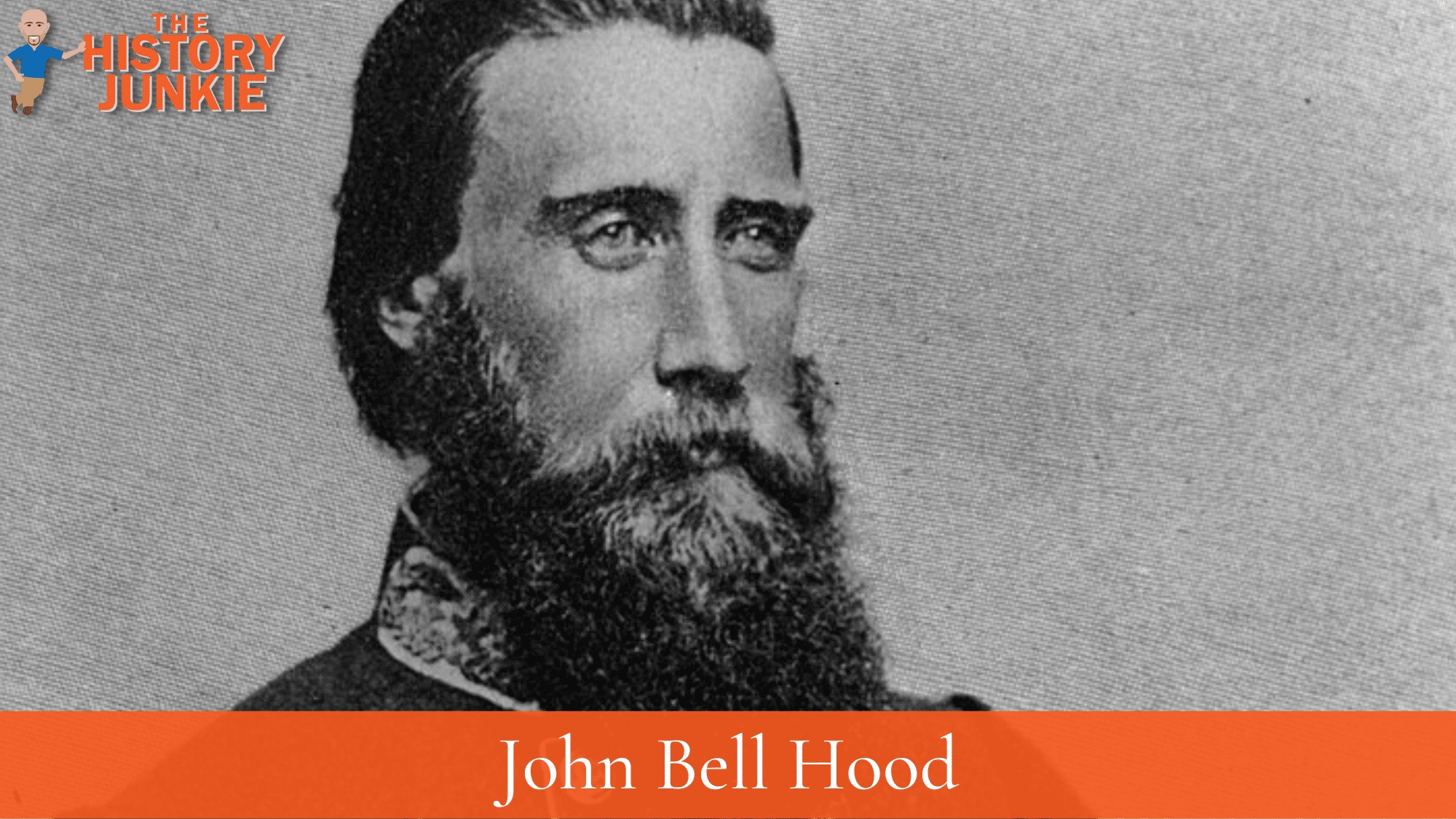
If there was one word that could sum up John Bell Hood, it would be aggression.
He was an attacking general and displayed incredible bravery when leading his troops. He suffered multiple wounds during the Civil War, which included the wound at Gettysburg, where he lost the use of his arm.
He began the Civil War frustrated that his home state of Kentucky stayed neutral and did not secede. Instead, he chose to serve with his adopted state of Texas. He began as a major and quickly worked his way up the ranks.
He impressed Stonewall Jackson so much at the Battle of Antietam that he was recommended for Major General.
He became the youngest General to lead an army when he was promoted to Joseph Johnston's position and was ordered to defend Atlanta. Unlike the defensive fighter Johnston, Hood launched frontal attacks against William Sherman's men. This would result in no gain and 20,000 casualties.
He left Atlanta for Sherman and moved towards Tennessee, hoping to lure Sherman away from Atlanta. Sherman did not budge, and Hood would be defeated in Tennessee.
He surrendered himself in Natchez, Mississippi, and was paroled on May 31, 1865.
Read Article: John Bell Hood Family Tree
Best Moment:
Battle of Gaines Mill - Hood distinguished himself by leading his brigade in a charge that broke the U.S. line, which was the most successful Confederate performance in the Seven Days Battles. Hood survived unscathed, but over 400 men and most of the officers in the Texas Brigade were killed or wounded. He broke down and wept at the sight of the dead and dying men on the field.
Worst Moment:
Battle of Atlanta - Understandably, Jefferson Davis wanted action and not the constant retreats and maneuvering of Johnston. Hood gave him that, but he did it foolishly. He launched frontal assaults on Sherman, who was ready for them. The frontal assaults did nothing and cost the Confederate Army 20,000 men.
#13. George Thomas

Robert E. Lee, James Longstreet, and many other southern commanders left the United States Army and took up arms for their home state. This was not true for George Thomas.
George Thomas thought about joining the Confederacy but did not, and that choice would cost him a relationship with his Southern family. He would never speak to his sisters again as they said that they did not have a brother. Despite this, he stayed loyal to the Union.
He won one of the first Union victories in the war at Mill Springs in Kentucky and served in important subordinate commands at Perryville and Stones River.
His stout defense at the Battle of Chickamauga in 1863 saved the Union Army from being completely routed, earning him his most famous nickname, "the Rock of Chickamauga."
He followed soon after with a dramatic breakthrough on Missionary Ridge in the Battle of Chattanooga. In the Franklin–Nashville Campaign of 1864, he achieved one of the most decisive victories of the war, destroying the army of Confederate General John Bell Hood, his former student at West Point, at the Battle of Nashville.
Despite all of his success, he is not remembered like other Union Generals. He was more cautious and deliberate than Grant or Sherman, who needed to be more aggressive and press their superior numbers.
He also did not write any memoirs after the war, and his birth family destroyed any letters of correspondence he sent to them.
Read Article: George Henry Thomas Family Tree
Best Moment:
Battle of Nashville - A solid argument can be made that his best moment was at Chickamauga, but I believe it was the utter destruction of John Bell Hood's army at Nashville. Hood was trying to force Sherman from his march and invaded Kentucky. The aggressive Hood attacked the stout defender in Thomas and was cut down. This would end the Army of Tennessee as an effective fighting force and be the last action John Bell Hood would ever see.
Worst Moment:
Battle of Perryville - Thomas performed well at the battle, but prior to the battle, he was offered command of the Army of Ohio and refused. After the battle, the Union promoted William Rosecrans to the position that was held by Don Carlos Buell. Thomas became upset because Rosecrans was a junior officer, but he was reminded that the Union offered him the position, and he refused.
#14. Winfield Scott
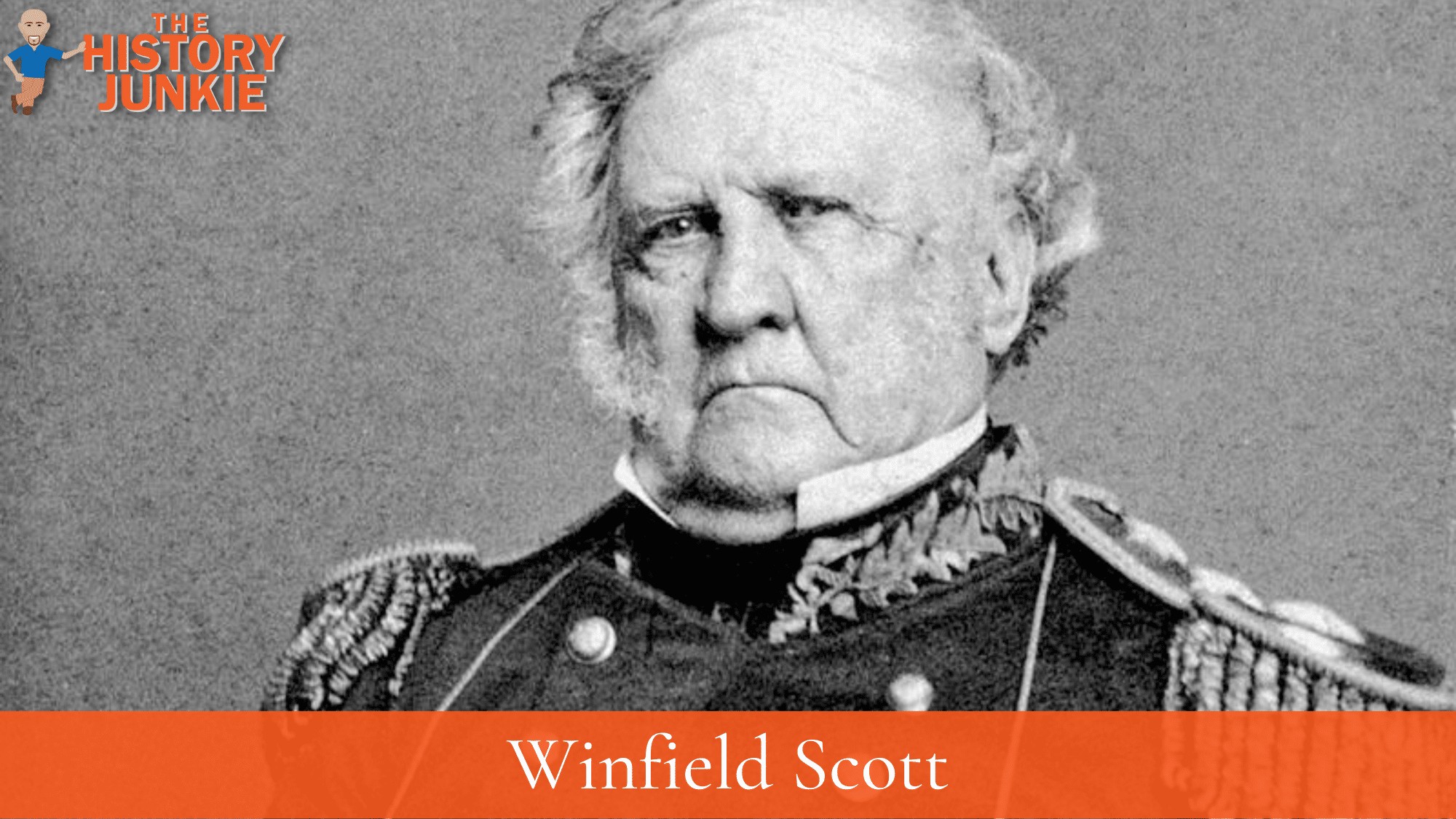
Winfield Scott was not an active General during the Civil War. He had served in the United States Military during the War of 1812 and the Mexican War.
At the time of the Civil War, he was located in West Point, severely overweight, and suffering from various health issues. Even so, Abraham Lincoln sought his advice, and Scott came up with the plan that would actually win the war when Grant executed it.
His plan was the Anaconda Plan, which called for a Union Blockade and Union control of the Mississippi. These were all executed, and it strangled the Confederacy and allowed the Union to use its overwhelming resources to finish them off.
When Grant was appointed as lead commander of the Union Army, Winfield Scott sent him his memoirs and inscribed it "from the oldest to the greatest general."
Read Article: Winfield Scott Family Tree
Best Moment:
Anaconda Plan - This would be the plan that ultimately won the war. The plan seemed common sense, but Lincoln had a hard time finding a General that could implement it. Grant did and took control of the Mississippi. The Union blockade held for the war and Sherman's March would devastate the South's will to fight and destroy its cities.
Worse Moment:
Recommending Robert E. Lee - When secession became imminent, Winfield Scott recommended Robert E. Lee as commander-in-chief of the Union Army. Unfortunately, Lee would resign and choose to fight for his home state in a losing effort. He also recommended Halleck
#15. Winfield Scott Hancock
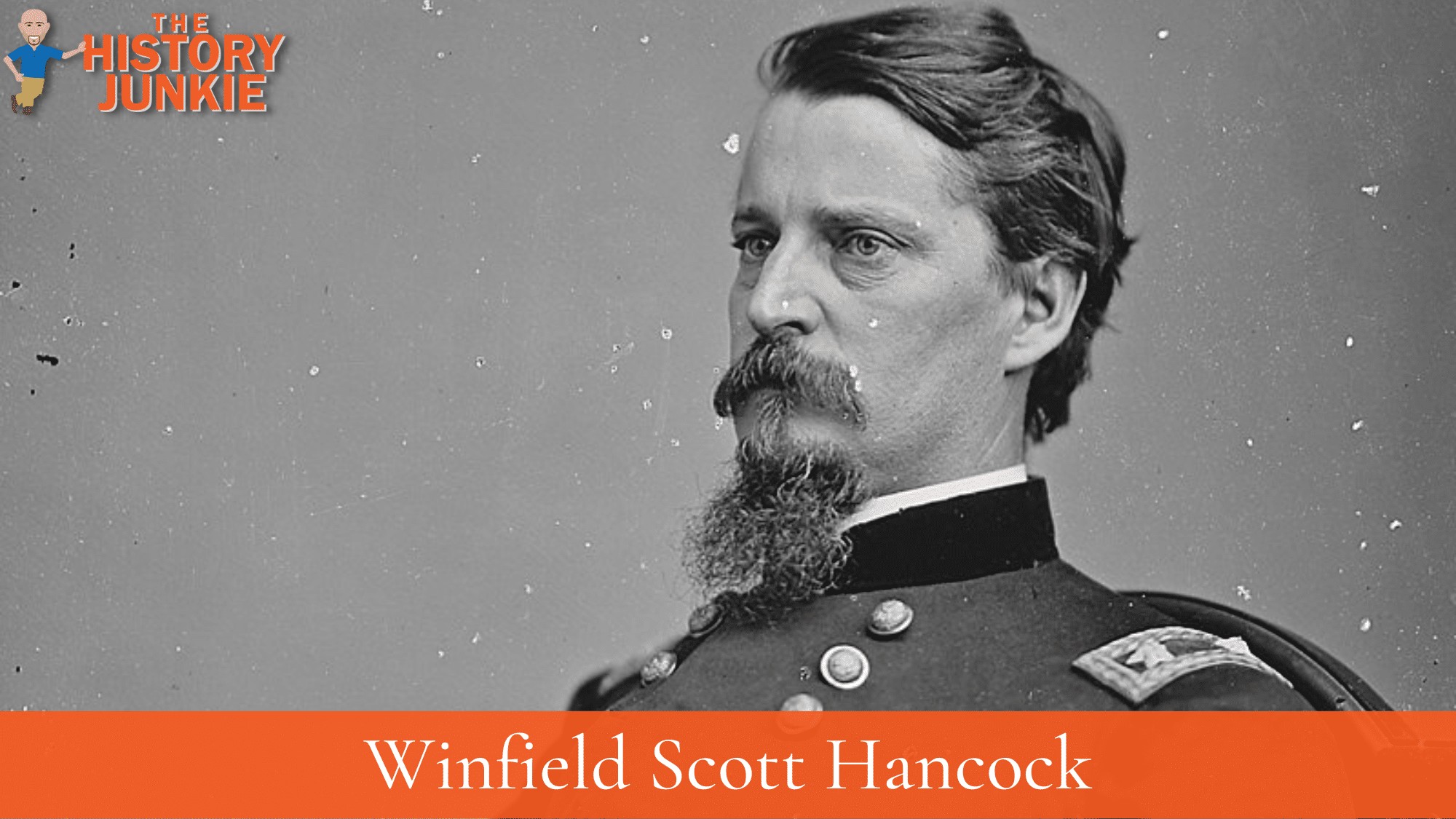
Winfield Scott Hancock is known for his actions at Gettysburg, which have immortalized him and also caused many of his other actions to fade into the background.
He was known as a "superb" commander by his peers and saw success under every General he served under, including George McClellan during the Peninsula Campaign.
During Gettysburg, he saw serious action on days 2 and 3 of the battle. On Day 2, his men were up against Longstreet's men, and it seemed as if the Confederates might break the Union line, but some daring maneuvers by the men from Minnesota that resulted in 87% casualties allowed Hancock time to tighten his defenses and push Longstreet back.
On Day 3, he would be at the center of Pickett's charge, and it would be his men that obliterated Pickett's division. During the battle, he was asked to get off his horse, and it is recorded that he said, "There are times when a corps commander's life does not count."
He was wounded in Gettysburg, and it would ail him the rest of the war. He fought and saw much success during the Overland Campaign and lost many men during his frontal assault on Cold Harbor.
Read Article: Winfield Scott Hancock Family Tree
Best Moment:
Battle of Gettysburg - There is little dispute about what Hancock's shining moment was during the Civil War. His tactics, leadership, and resolve all showed during the Battle of Gettysburg. It was said that "No other Union general at Gettysburg dominated men by the sheer force of their presence more completely than Hancock"
Worst Moment:
Overland Campaign - Hancock fought well throughout the Overland Campaign. However, there was one blunder that often goes unnoticed. After Grant's army slipped past Lee's army to cross the James River, Hancock found himself in a position from which he might have ended the war. His corps arrived to support William Farrar Smith's assaults on the lightly held Petersburg defensive lines, but he deferred to Smith's advice because Smith knew the ground and had been on the field all day, and no significant assaults were made before the Confederate lines were reinforced. One of the great opportunities of the war was lost.
#16. Stand Watie
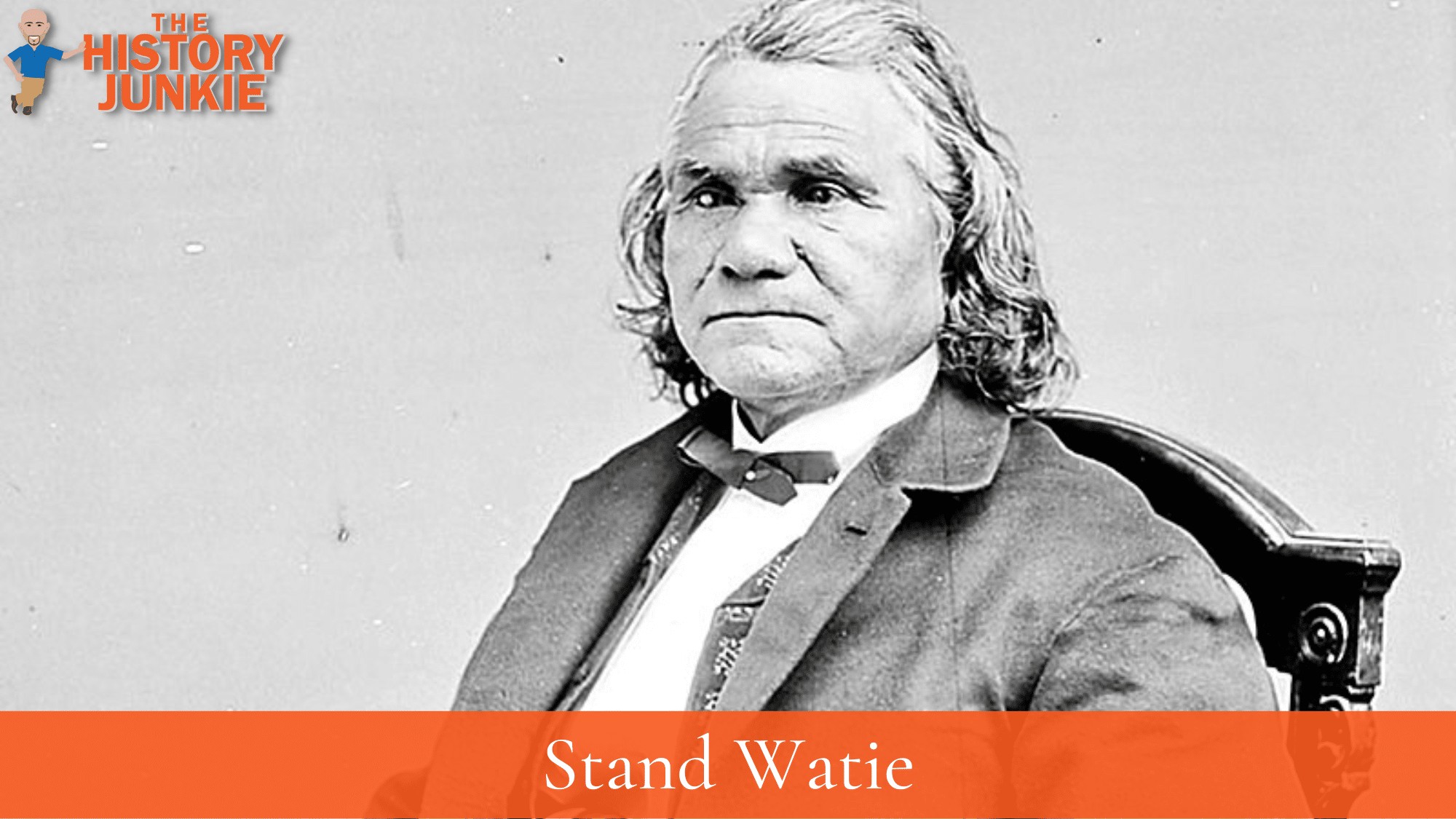
He was the only Native American to rise to the rank of General during the Civil War.
Stand Watie joined the war effort with the Confederacy because he believed that the Union would take his land and make Oklahoma a state. At the time, the United States had thought about admitting Oklahoma, which was part of a semi-sovereign nation.
It should be noted that Watie was also a slave owner.
They fought in a number of battles and skirmishes in the western Confederate states, including the Indian Territory, Arkansas, Missouri, Kansas, and Texas.
Watie's force reportedly fought in more battles west of the Mississippi River than any other unit. Watie took part in what is considered to be the most notable Confederate victory in Indian Territory, the Second Battle of Cabin Creek, which took place in what is now Mayes County, Oklahoma, on September 19, 1864.
He and his men fought hard, and he would be the last field General to surrender to the Union.
Read Article: Stand Watie Family Tree
Best Moment:
Second Battle of Cabin Creek - The battle was significant in that it raised morale and allowed Watie to continue campaigning in the Western theater. It boosted morale but did little in the way of tactical advancement. The West was in control of the Union, and Grant was tightening the noose on Lee in the Eastern theatre.
Worst Moment:
Doaksville - The Confederacy had been defeated throughout the South, and everyone had surrendered, which left the Confederacy nonexistent and unable to defend Indian Territory. Watie would meet Union representatives in Doaksville, which were part of the Choctaw Nation, and agree to a ceasefire.
#17. George McClellan
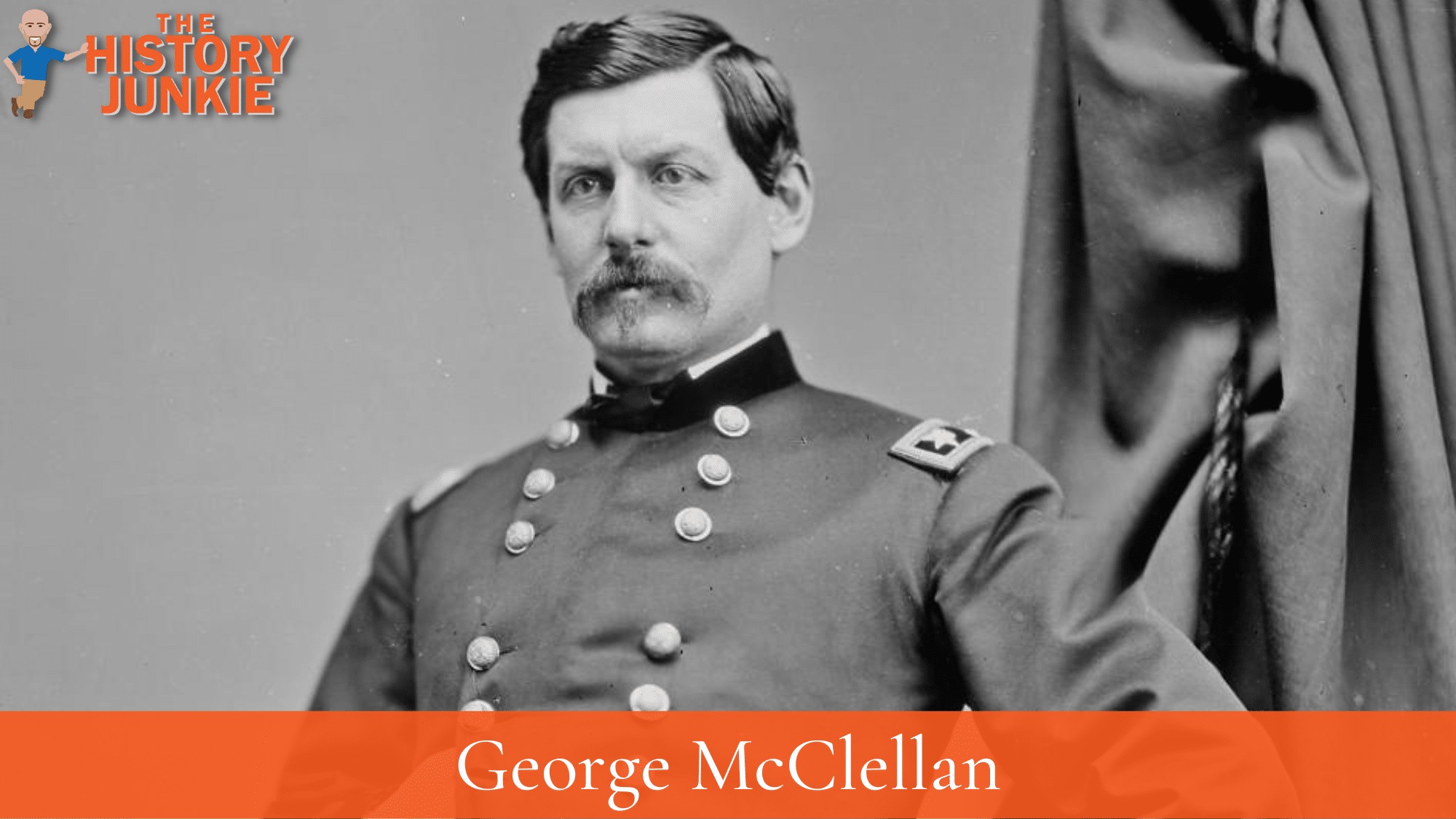
George McClellan is often rated as one of the worst generals of the Civil War.
He won a small battle at the Battle of Phillipi, which put him onto the scene and got the attention of Abraham Lincoln. He would eventually be given command of the Army of the Potomac.
He organized and drilled the Army of the Potomac to the point they were well-disciplined and ready to fight, but he never moved. Finally, after being prodded by Lincoln, he began the Peninsula Campaign.
The Peninsula Campaign would end in a disaster, with Robert E. Lee launching several attacks on the Union and causing McClellan to become more reluctant.
What McClellan lacked was the ability to press his advantage and constantly dog Lee. If he had continued to attack, then he may have been able to wear Lee down, but he did not have the stomach for the casualties it would take to implement that strategy.
He may have been a good defensive commander, but the Union side required the commanders to take the offensive.
Lincoln requested his services twice, and both times, he failed. McClellan became such an adversary in Lincoln that he challenged him in the election of 1864.
Read Article: George McClellan Family Tree
Best Moment:
Battle of Antietam - It can be argued that this was not McClellan's best moment since Abraham Lincoln did not like his reluctance to counterattack a beaten Confederate force. However, the victory gave Lincoln the leverage he needed to issue the Emancipation Proclamation. McClellan's previous best moment was a skirmish at the Battle of Philippi.
Worse Moment:
Peninsula Campaign - McClellan had overwhelming numbers but lacked the guts to use them. He was also fooled by J.E.B. Stuart, who made him look like a fool and hesitated against Robert E. Lee, who knew how to fight a war against McClellan. Instead of using his advantage, he tried to put the Confederates under siege. A move that Robert E. Lee was not going to allow. His constant attacks shook McClellan and caused a hit to his reputation.
#18. J. E. B. Stuart
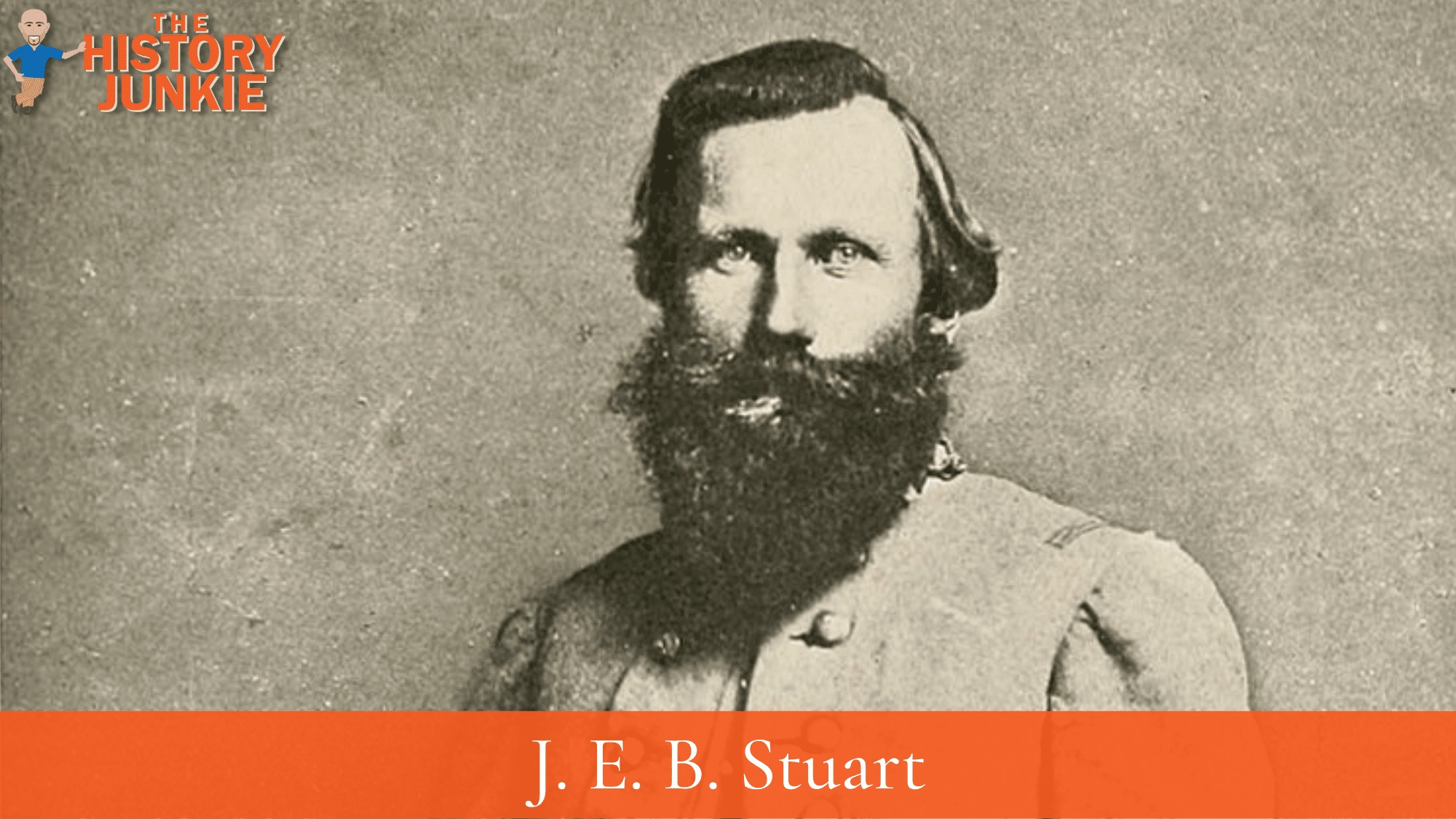
J.E.B. Stuart was a Confederate Cavalry commander who first joined the war and fought under Stonewall Jackson.
He quickly rose to fame for his daring exploits that embarrassed the Union Army during the Peninsula and Maryland Campaigns. His ability to ride and scout were some of the best on both sides of the war, and Robert E. Lee came to rely on him for reconnaissance.
At the Battle of Chancellorsville, he distinguished himself as a temporary commander of the wounded Stonewall Jackson's infantry corps.
It would be during the Battle of Gettysburg that he drew much criticism when Lee became detached from Stuart and did not have an idea what he was up against.
There has been much criticism of Stuart during Gettysburg, and some of it is sensationalized due to the popular movies and books that surround the battle. However, much of the criticism is deserved.
Once Grant took over the Army of the Potomac, he eventually put Philip Sheridan in charge. It would be during the Overland Campaign that Stuart was mortally wounded and died before the war was over.
Read Article: JEB Stuart Family Tree
Best Moment:
Peninsula Campaign - Lee had heard rumors that McClellan's right flank was exposed and ordered Stuart to check if those rumors were true. Stuart audaciously led his cavalry around McClellan's army and got the necessary intelligence about the right flank. He then circled around the Union Army undetected and returned to Lee. He came a few miles away from McClellan. The action embarrassed the already timid McClellan.
Worst Moment:
Battle of Yellow Tavern - The Confederacy was crumbling, and Grant pressed his advantage against Lee. Stuart and Philip Sheridan met in the Shenandoah Valley, where Sheridan would launch an aggressive offensive. They would mortally wound Stuart and cause Lee to lose his most senior cavalry officer.
#19. George Armstrong Custer
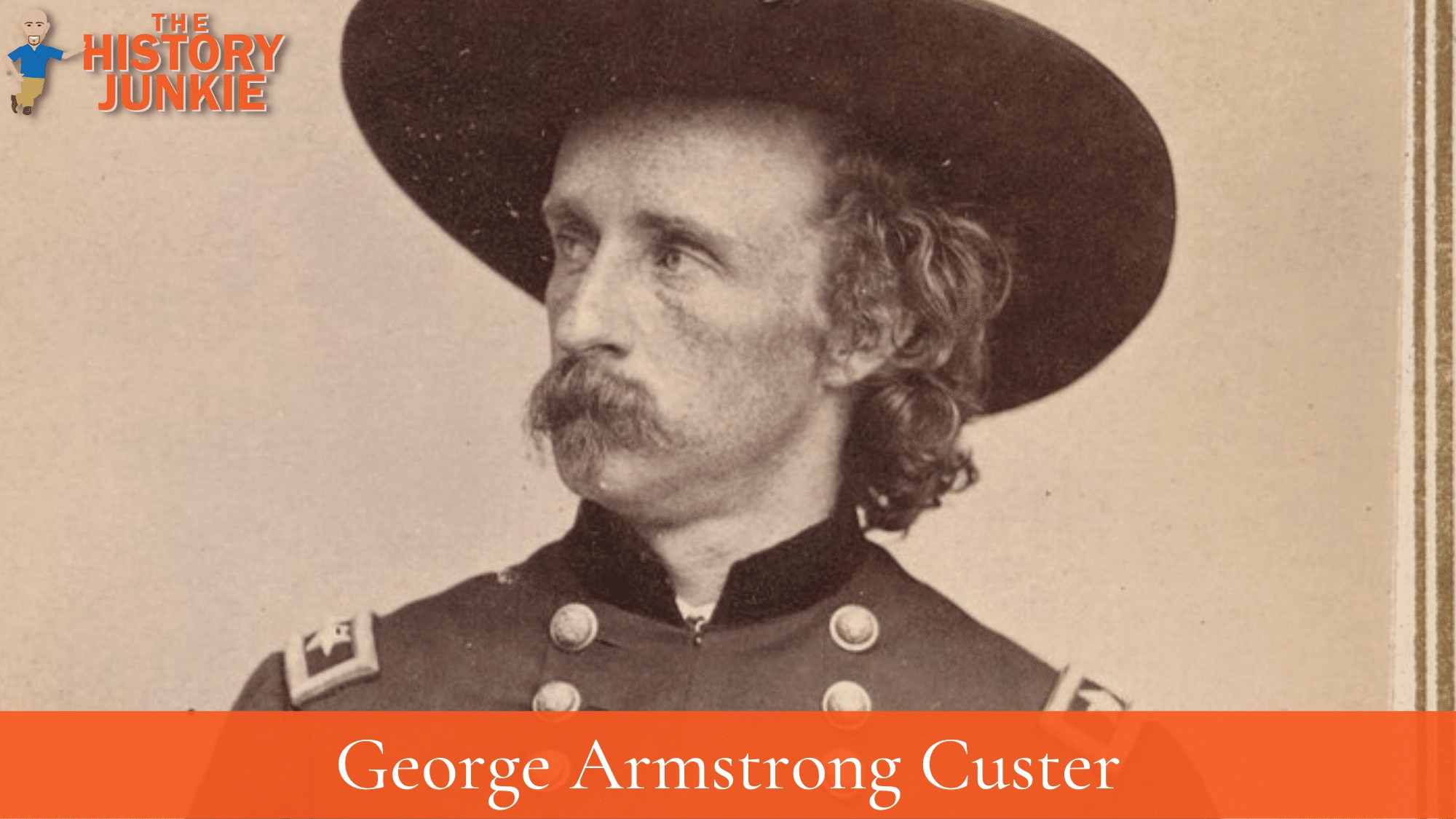
One of the more overlooked Civil War Generals is George Armstrong Custer. He is obviously known as an Indian fighter who was killed at the Battle of Little Big Horn, but many forget that he was known as the boy general who became the youngest General in the Civil War.
He rose quickly and served as an aide de camp for George McClellan and would eventually be given command of the Michigan cavalry. He groomed his men to become like him, and they were known as Wolverines for their aggression.
He fought at Gettysburg and had two encounters with Stuart. The most significant encounter occurred on the third day of the battle when Stuart was going to help support Pickett's charge.
Outnumbered but undaunted, Custer rode to the head of the regiment, "drew his saber, threw off his hat so they could see his long yellow hair," and shouted... "Come on, you Wolverines!"
Custer formed his men in the line of battle and charged. "So sudden was the collision that many of the horses were turned end over end and crushed their riders beneath them...."
As the Confederate advance stopped, their right flank was struck by troopers of the Fifth, Sixth, and Seventh Michigan.
Within twenty minutes, the combatants heard the sound of the Union artillery opening up on Pickett's men. Stuart knew that whatever chance he had of joining the Confederate assault was gone. He withdrew his men to Cress Ridge.
General Custer participated in Sheridan's campaign in the Shenandoah Valley. The civilian population was specifically targeted in what is known as the Burning.
Custer was present at the surrender at Appomattox Court House, and the table upon which the surrender was signed was presented to him as a gift for his wife by Sheridan, who included a note to her praising Custer's gallantry.
Read Article: George Armstrong Custer Family Tree
Best Moment:
Battle of Gettysburg - His attack on Stuart, despite being outnumbered, made Pickett's charge even more vulnerable. Stuart was unable to support the charge, and it was due to Custer's aggression and heroics. He showed no fear of dying, and he would again meet Stuart in the Shenandoah Valley, where he was mortally wounded.
Worst Moment:
Clarksville, Virginia - Custer did not have too many terrible moments during the Civil War. He did have one just after the war ended when he stole a prized horse from a citizen in Clarksville. The horse was worth $10,000, which would be worth six digits in today's money. The owner wrote General Grant, who then ordered Custer to return the horse. He did not, instead hiding the horse and winning a race with it the next year before the horse died suddenly. This shows his weak character despite his unbelievable bravery.
#20. Ambrose Burnside
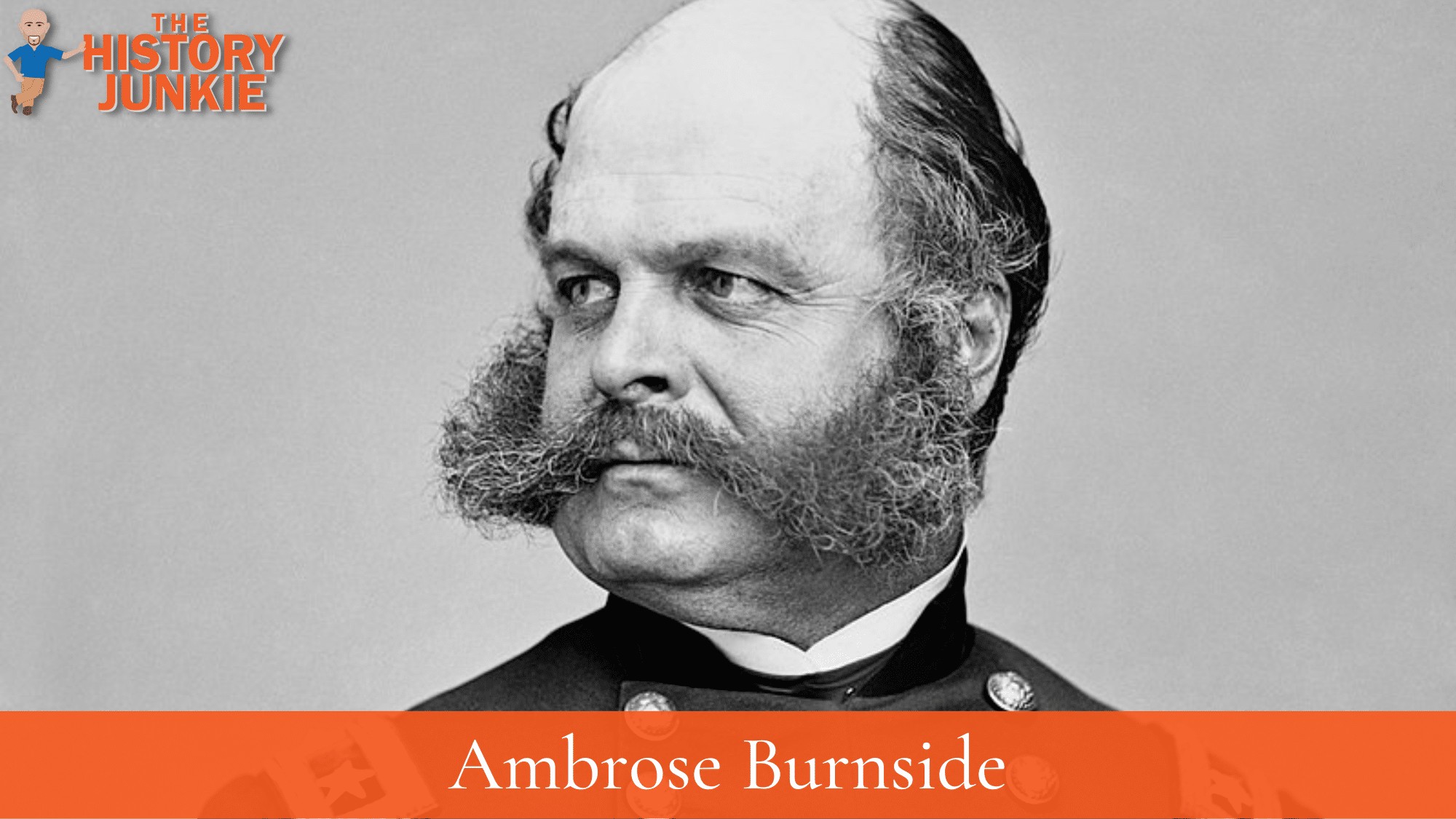
Ambrose Burnside served without distinction for most of the war. He seemed always to be promoted despite never serving with distinction in many battles.
He served throughout the beginning of the war and took part in the First Battle of Bull Run, North Carolina's Expedition, Maryland Campaign, Battle of Fredericksburg, Morgan's Raid, Overland Campaign, and the Siege of Petersburg.
He was promoted to replace George McClellan but was met with disaster at Fredericksburg. Unlike others who came before him, Burnside seemed to understand his limitations and even offered to resign. Lincoln did not accept his resignation and believed he could find a spot for him to be successful.
Burnside did well when he stopped Morgan's Raid and captured the Confederates, bringing terror to Indiana, Ohio, and Pennsylvania.
Post-war, he was an excellent politician and served as the Governor of Rhode Island.
Bruce Catton said it best:
Burnside had repeatedly demonstrated that it had been a military tragedy to give him a rank higher than a colonel. One reason might have been that, with all his deficiencies, Burnside never had any angles of his own to play; he was a simple, honest, loyal soldier, doing his best even if that best was not very good, never scheming or conniving or backbiting. Also, he was modest; in an army many of whose generals were insufferable prima donnas, Burnside never mistook himself for Napoleon. Physically, he was impressive: tall, just a little stout, wearing what was probably the most artistic and awe-inspiring set of whiskers in all that bewhiskered Army. He customarily wore a high, bell-crowned felt hat with the brim turned down and a double-breasted, knee-length frock coat, belted at the waist-a costume which, unfortunately, is apt to strike the modern eye as being very much like that of a beefy city cop of the 1880s.
Read Article: Ambrose Burnside Family Tree
Best Moment:
North Carolina Expedition - Burnside saw success while trying to implement the Anaconda Plan. He won the Battle of Roanoke Island and the Battle of New Bern. These battles were strategic and helped enforce the Union Blockade. He would leave North Carolina to help McClellan, and the next Union commander to journey into North Carolina would be William Sherman in 1865.
Worst Moment:
Battle of Fredericksburg - He was reluctant to take command of the Army of the Potomac due to not believing he was fit for the command. There were many disasters that occurred at Fredericksburg, and while some were not Burnside's fault, he did not adapt well to the changes. The result was a humiliating defeat for the Union and a dip in morale. Burnside put in his resignation after the battle, but Lincoln denied it.
#21. A. P. Hill
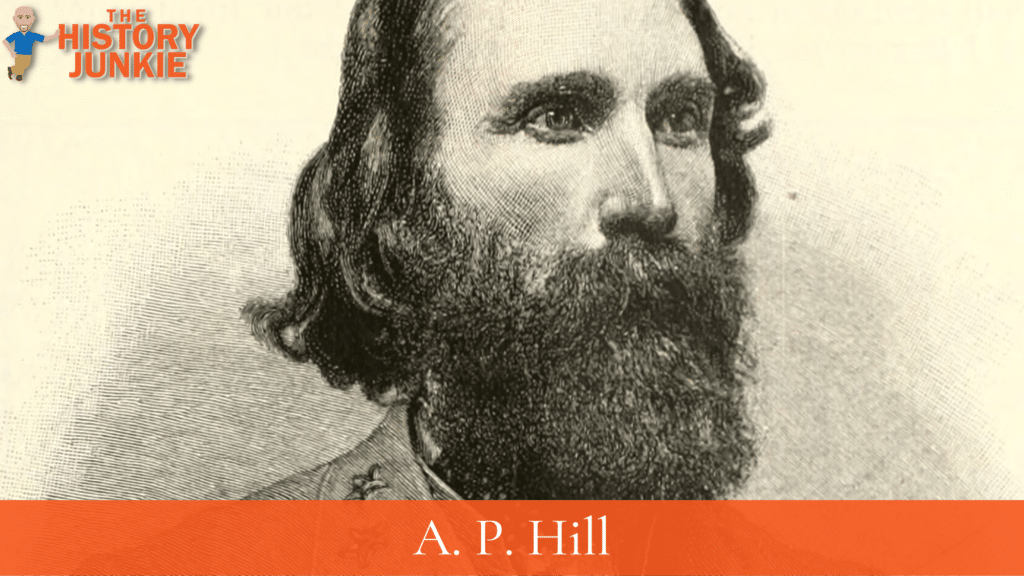
A. P. Hill was emotional, aggressive, and frequently ill at pivotal moments, and according to both sides, he was highly regarded. He was the commander of the "Light Division," whose name contradicted itself because they were one of the largest divisions in the Confederate Army, but perhaps Hill wanted them to be aggressive and have quick movements.
He was given accolades during the Peninsula Campaign for the success of his men, but his constant conflict with General Longstreet caused him to be arrested and transferred to Stonewall Jackson. He and Jackson would also not get along, which would be a theme in Hill's career.
He took criticism during the Battle of Gettysburg for getting involved in the fight too quickly and not allowing Lee to get set up. On the 3rd day, Hill's division represented two-thirds of Pickett's Charge, but Lee put Longstreet in command. His men would take the highest amount of casualties during the charge.
He served well during the Overland Campaign but was overwhelmed during the Battle of the Wilderness and would have lost the battle if not for timely reinforcements. After the battle, he would become ill and not return until the Siege of Petersburg.
When he returned, it was the last days of the Confederacy. Hill did not want to live to see the Confederacy fail, and at the Third Battle of Petersburg, he was killed almost instantly by a Pennsylvania sharpshooter.
Read Article: A.P. Hill Family Tree and Descendants
Best Moment:
Battle of Antietam - While Lee's army was enduring strong attacks by the U.S. Army of the Potomac outside Sharpsburg, Maryland, Hill's Light Division had been left behind to process U.S. prisoners of war at Harpers Ferry. Responding to an urgent call for assistance from Lee, Hill marched his men at a grueling pace and reached the battlefield just in time to counterattack a strong forward movement by the corps of Maj. Gen. Ambrose Burnside, which threatened to destroy Lee's right flank. Hill's arrival neutralized the threat, ending the battle with Lee's army battered but undefeated.
Worst Moment:
Multiple Arrests - He was put under arrest by General Longstreet and General Stonewall Jackson. He had trouble with his superiors due to his aggressive nature. Ironically, he was beloved by his men, and most spoke well of him off the battlefield. However, his aggressive nature, which was his strength, would often become a weakness if unchecked.
#22. Philip Sheridan
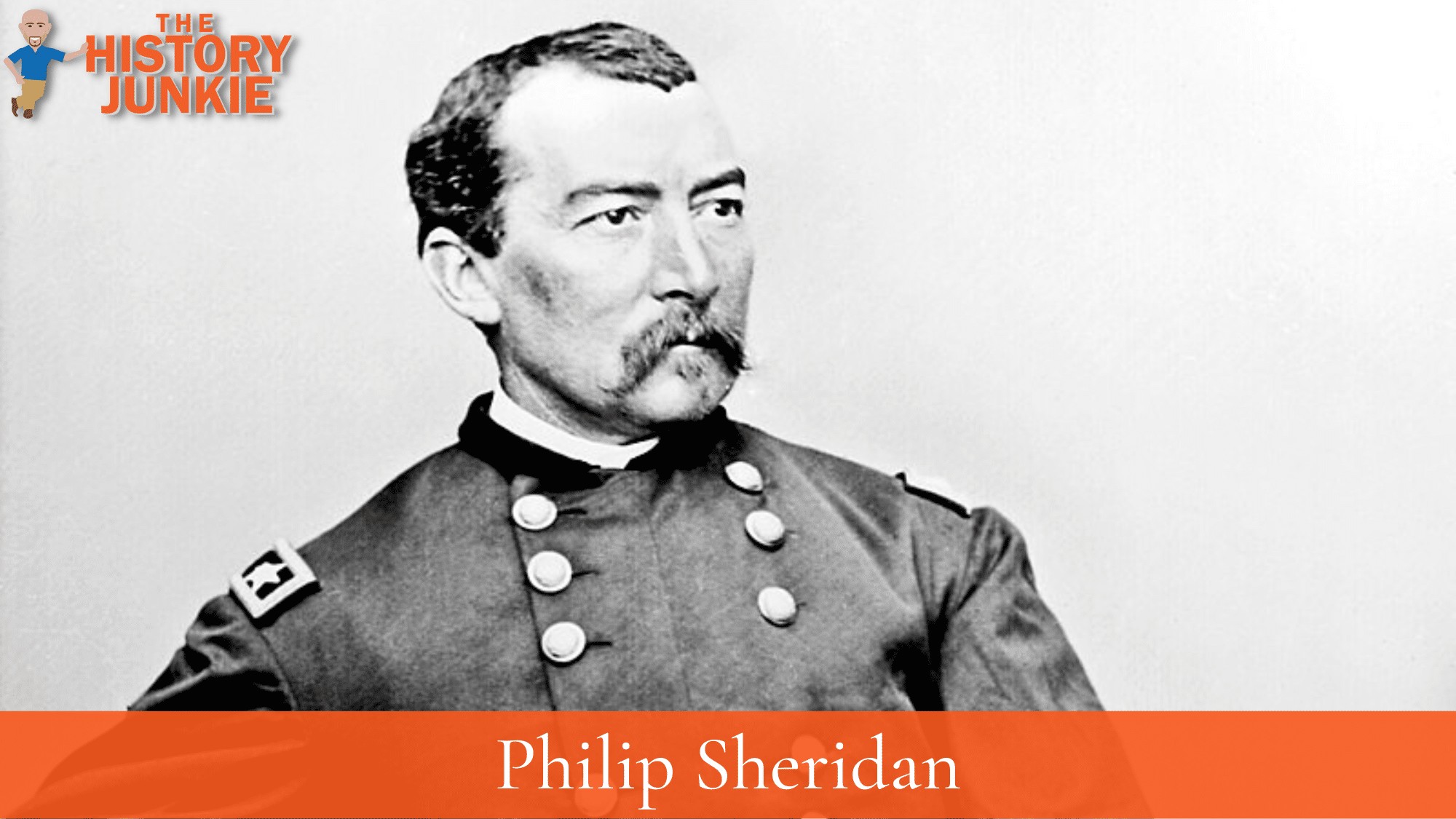
Philip Sheridan is recognized as one of the most brilliant military strategists and tacticians of the war. His actions during the Shenandoah Campaign crushed the Confederate Army and hastened the end of the Civil War.
He played an essential role on Days 2 and 3 of Gettysburg.
Sheridan arrived at Gettysburg on July 2, 1863, and immediately took command of the Union cavalry. He ordered a series of cavalry attacks against the Confederate left flank, which helped to turn the tide of the battle.
On July 3, Sheridan's cavalry again played a key role in the Union victory. They attacked the Confederate rear, which helped to force the Confederates to retreat.
Philip Sheridan defeated Jubal Early's Army in the Valley Campaign of 1864. Sheridan's army was larger and better equipped than Early's, and he used his superior numbers and firepower to defeat Early in a series of battles. Sheridan also used his cavalry to great effect, harassing Early's army and disrupting his supply lines.
The first major battle of the campaign was the Battle of Third Winchester, fought on September 19, 1864. Sheridan attacked Early's army and drove them back.
The next day, Sheridan attacked Early's army again at the Battle of Fisher's Hill. Sheridan's army was victorious, and Early was forced to retreat.
Sheridan's victory in the Valley Campaign of 1864 was a major turning point in the Civil War. It helped to secure the Union's victory in the war, and it also helped to end the Confederacy's hopes of winning the war.
His army also mortally wounded J. E. B. Stuart at the Battle of Yellow Tavern.
He would be present when Robert E. Lee surrendered to Ulysses S. Grant at Appomattox Courthouse.
Read Article: Philip Sheridan Family Tree
Best Moment:
Valley Campaign - Sheridan had many great moments in the war, but none were more crippling than his actions during the Valley Campaign. Then, he destroyed Jubal Early's Army and weakened the Confederacy. He used similar tactics that Grant used in pressing his number advantage and never allowing the Confederates to rest even if the rebels held off the Union the next day or shortly after he would attack them again.
Worst Moment:
Battle of Spotsylvania Courthouse - Sheridan's actions at Spotsylvania Court House were controversial. Some have criticized him for not being more aggressive in his attacks, while others have praised him for his ability to hold the Confederates off. Ultimately, Sheridan's role in the Battle of Spotsylvania Court House was a mixed bag. He made some mistakes, but he also made some important contributions to the Union war effort.
#23. P. G. T. Beauregard
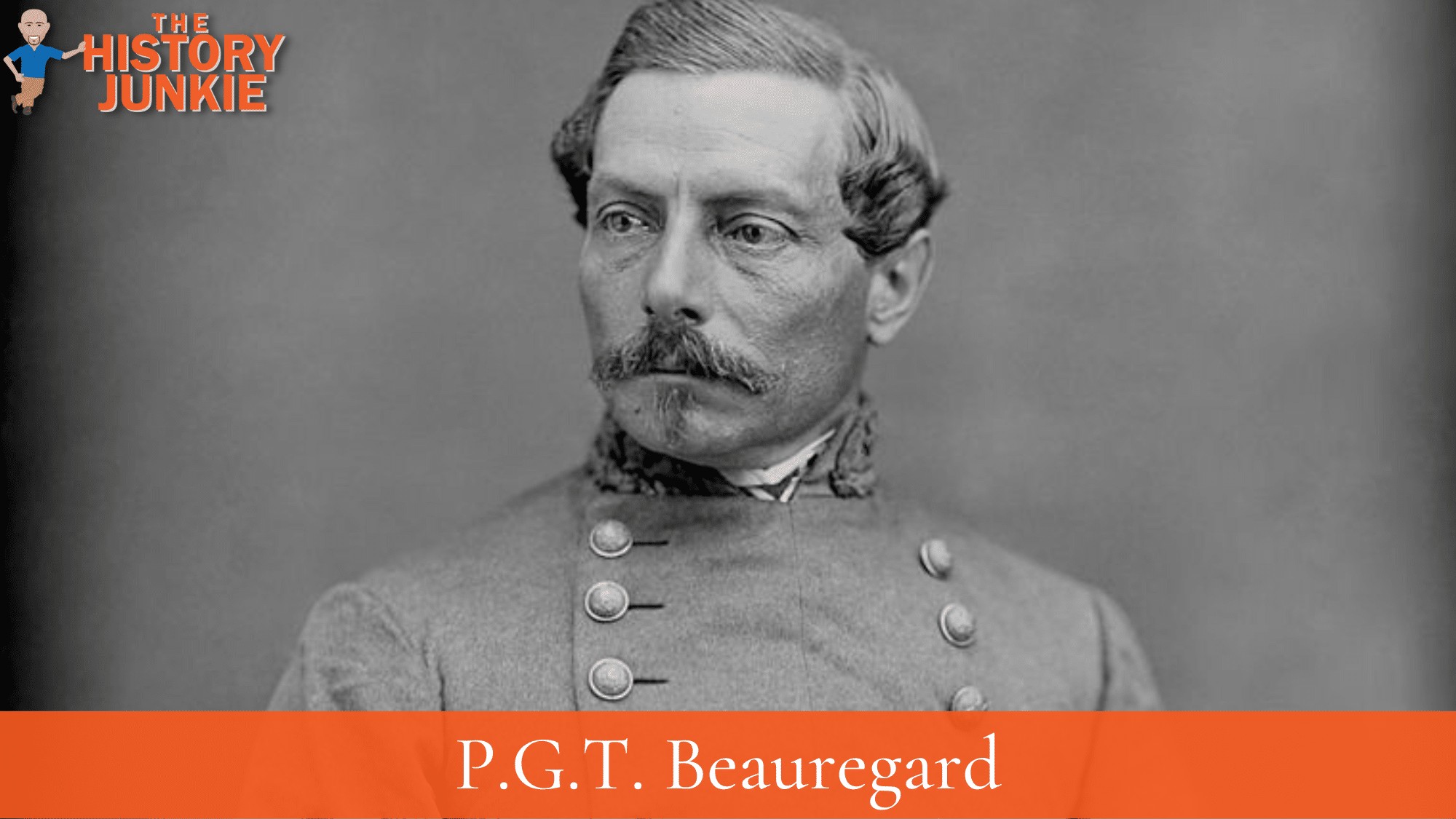
Beauregard was one of the more successful Confederate Generals outside of Robert E. Lee during the Civil War. He gets much of the credit at the beginning of the war but does not play a primary role toward the end.
His first action was taken at Fort Sumter when he ordered the firing of the fort. Ironically, the fort was guarded by a former mentor, Robert Anderson, and his mentor could not hold off the Confederates for long. The American flag was lowered, and Fort Sumter marked the beginning of the Civil War.
Afterward, he joined Joseph E. Johnston in the First Battle of Bull Run. While they both played a role, it was Beauregard who received most of the credit. This is probably due to his personality, as he was more outgoing than Johnston.
In 1863, he helped defend Charleston, South Carolina, from Union attacks. Charleston was a key port for the Confederacy
Beauregard was a genius and inventor, but his personality was not to the liking of Jefferson Davis. He was not given a significant command after Charleston and seemed passive-aggressive when Lee asked for help.
Despite this flaw, his actions at the Second Battle of Petersburg were some of his finest work in the war.
Read Article: PGT Beauregard Family Tree
Best Moment:
Second Battle of Petersburg - On June 15, his weak 5,400-man force-including boys, old men, and patients from military hospitals-resisted an assault by 16,000 Federals. Beauregard gambled by withdrawing his Bermuda Hundred defenses to reinforce the city, assuming correctly that General Benjamin Butler would not capitalize on the opening. His gamble succeeded, and he held Petersburg long enough for Lee's army to arrive. It was arguably his finest combat performance of the war.
Worst Moment:
Battle of Shiloh - The massive frontal assault was marred by Beauregard's improper organization of forces-successive attacks by corps in lines 3 miles long rather than assigning each corps a discrete portion of the line for a side-by-side assault. This arrangement caused the intermingling of units and confusion of command; it failed to concentrate mass at the appropriate place on the line to affect the overall objectives of the attack. Albert Sydney Johnston was mortally wounded, and Beauregard took his place. Instead of pressing his advantage, he halted to wait until morning. In the Morning, Grant was reinforced and defeated the Confederates.
#24. George Pickett
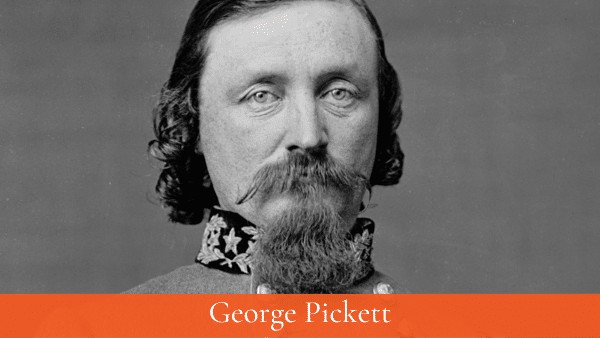
He is best known for his frontal assault at Gettysburg, known as Pickett's Charge, which annihilated much of his men. He went to his grave, blaming Robert E. Lee for the faulty plan, and said that he had killed his men.
However, Pickett did much more than the tragedy that took his men at Gettysburg.
The bulk of his accomplishments took place in 1862 when he found success at Williamsburg and Seven Pines. He was severely wounded at the Battle of Gaines Mill, which took him out of action for the rest of the summer. When he returned, he was promoted to major general.
In 1863, he did not see much action. He was in reserve for the Confederate victory at Fredericksburg and did not participate in Chancellorsville.
The action he did see in 1863 was at Gettysburg, and it is well documented what happened to his men during their assault. Pickett never got over the loss and seemed to spiral the rest of the war.
Perhaps his darkest moment occurred when, in 1864, he was head of the Department of North Carolina and learned that some of the captured Union soldiers were former Confederates.
In a fit of rage, General George Pickett ordered 22 Union soldiers who had been captured by Confederate forces to be tried by court-martial and summarily hanged in Kinston, North Carolina.
The executions were carried out in front of the soldiers' families and friends, and their bodies were stripped and buried in an unmarked mass grave.
He eventually returned to command his old unit, but was never the same.
Pickett is often viewed as incompetent due to his multiple failures. His dashing appearance and charisma aided his popularity, but on the field, he was not respected by other officers. He failed to achieve his goals many times.
His wife would change his legacy after his death when she became an author and lecturer.
Read Article: George Pickett Family Tree and Descendants
Best Moment:
Battle of Gaines Mill: He was shot off his horse during the battle, but he continued to lead his brigade forward, leading his horse on foot for a while. A second assault by Pickett's brigade, led by Colonel Eppa Hunton, along with the brigade led by Cadmus M. Wilcox, broke the Union line. Pickett feared that he had been mortally wounded, but the wound was initially assessed as minor. However, the shoulder wound was actually severe enough that Pickett was out of action for the next three months, and his arm remained stiff for at least a year. When he returned to action he was promoted to major general.
Worst Moment:
Battle of Gettysburg: Pickett's Charge was not his fault, and General James Longstreet had argued with Lee about the assault. He was simply following the lead of his superiors when his unit took heavy casualties. While the charge was not his fault, what occurred afterward was his own. He never got over it through the entire war, and the charismatic figure developed a bitter attitude that resulted in him blaming other officers for his failures and sentencing 22 Union men to their deaths. He held the bitterness for the rest of his life, which probably aided his ailing health.
